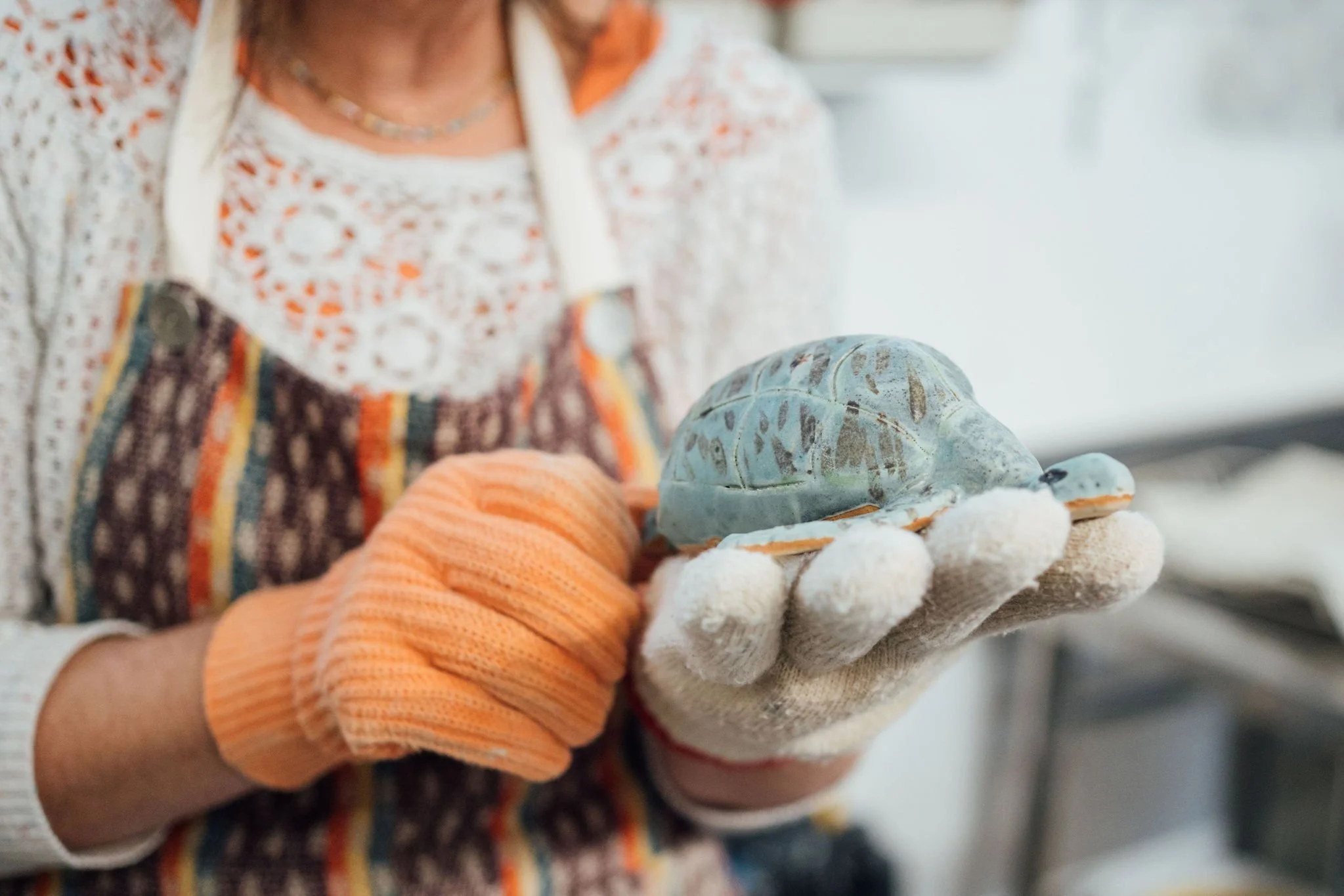Projects
Are you stuck for ideas. Here are some suggestions.
Throwing on the Wheel
For work on the wheel you will need an ungrogged clay, equipment including bowl, sponge, ribs, cutting wire and needle tool.

A challenging project 1.1kg for the jar, 225g for the lid. Source: ClayCraft Issue 48, p.8

Thrown bowl from 680g of clay. Source - ClayCraft Issue 52, p.8

Thrown Two-part Bottle Form using 900g clay for body, 115g for the neck. Issue 54 p.8

Thrown Squared Vase from 900g of clay. Source: Issue 59 p.8

Thrown wall-hanging ring vase. using 1.4kg of clay. Source: ClayCraft Issue 74 p. 8
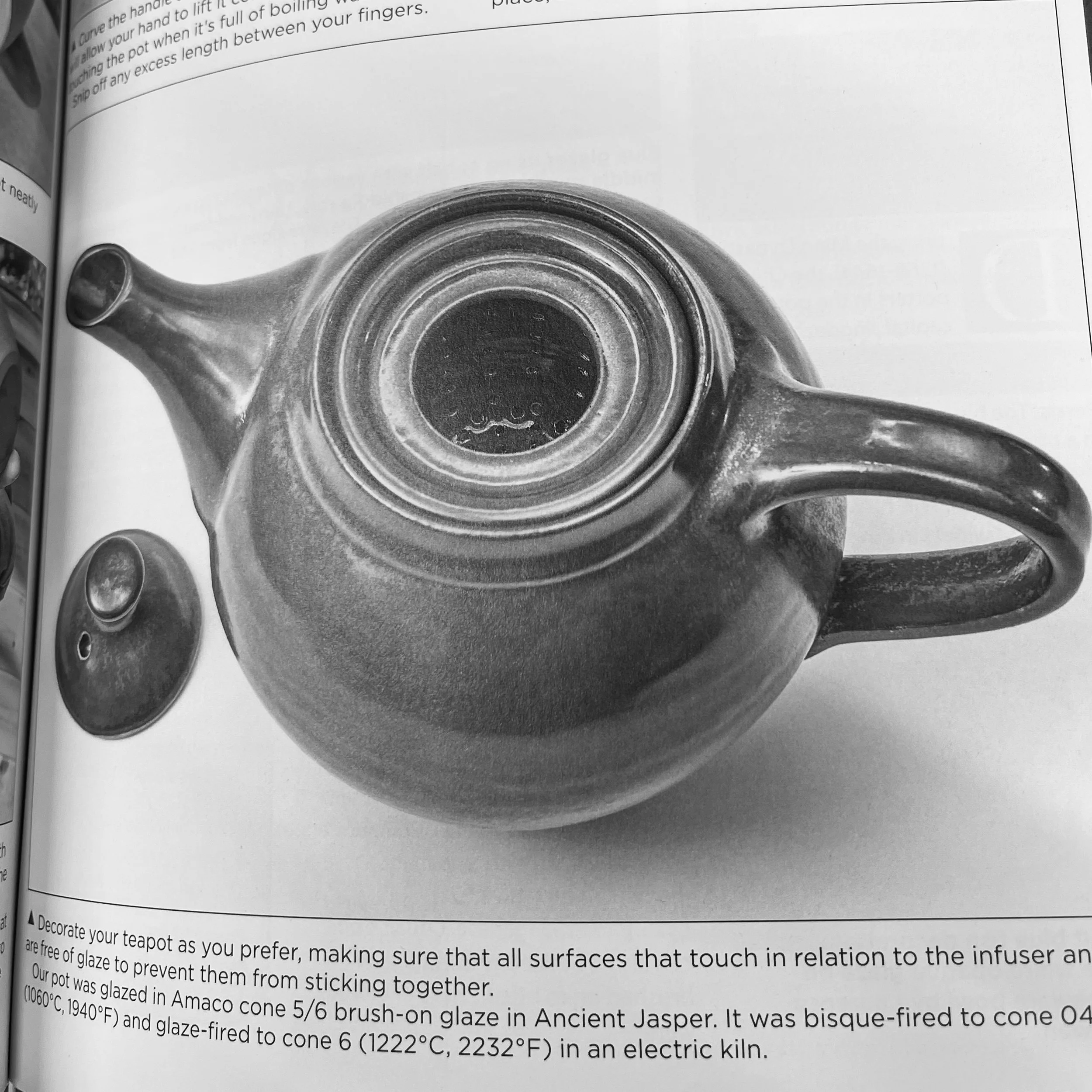
Thrown Teapot Part 1 and Part 2: Issue 75 and 76 of ClayCraft.

Thrown mug with infuser using 341g of clay for cup and 114g for infuser. Source: Claycraft Issue 77 p.8

Thrown Solitaire Game using 1.6kg of clay. Source: ClayCraft issue 79 p.8

Thrown beakers in 2 sizes using 284g for taller size and 171 for smaller beaker. Source: ClayCraft Issue 79 p.60

Thrown distorted oval vessel using 1.8kg of clay. Source: ClayCraft issue 81 p.8

Tall Jug using 1.8kg of clay. Source: ClayCraft p.82
Glazes
The glaze palette at the studio has been developed over time in order to provide our potters with a broad and safe range of glazes that use materials that have minimal impact on the environment.
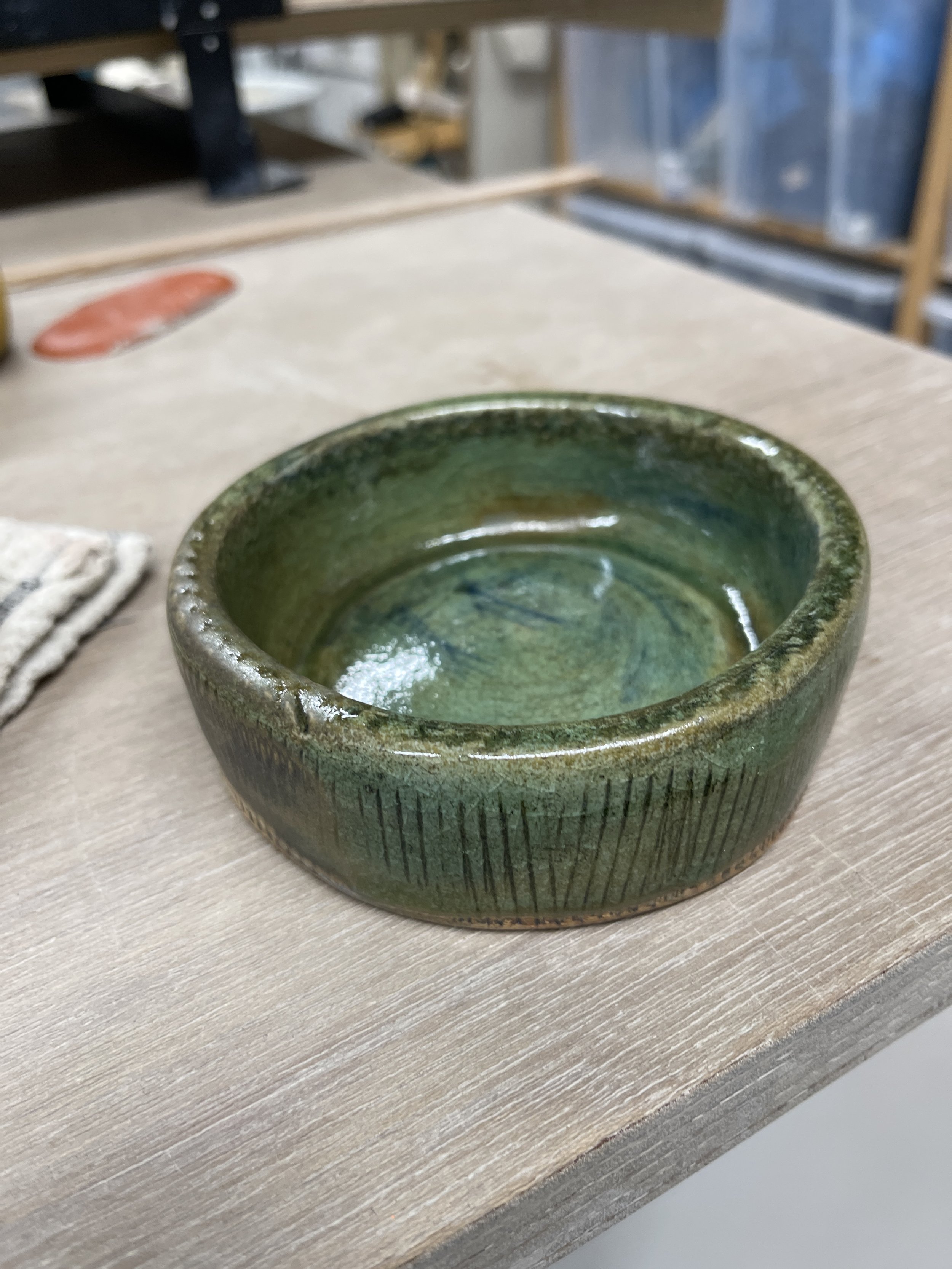
Celadon Green with Copper Oxide in texture of the clay.

Celadon Green - double dip over quick dip gives lovely tapered effect.
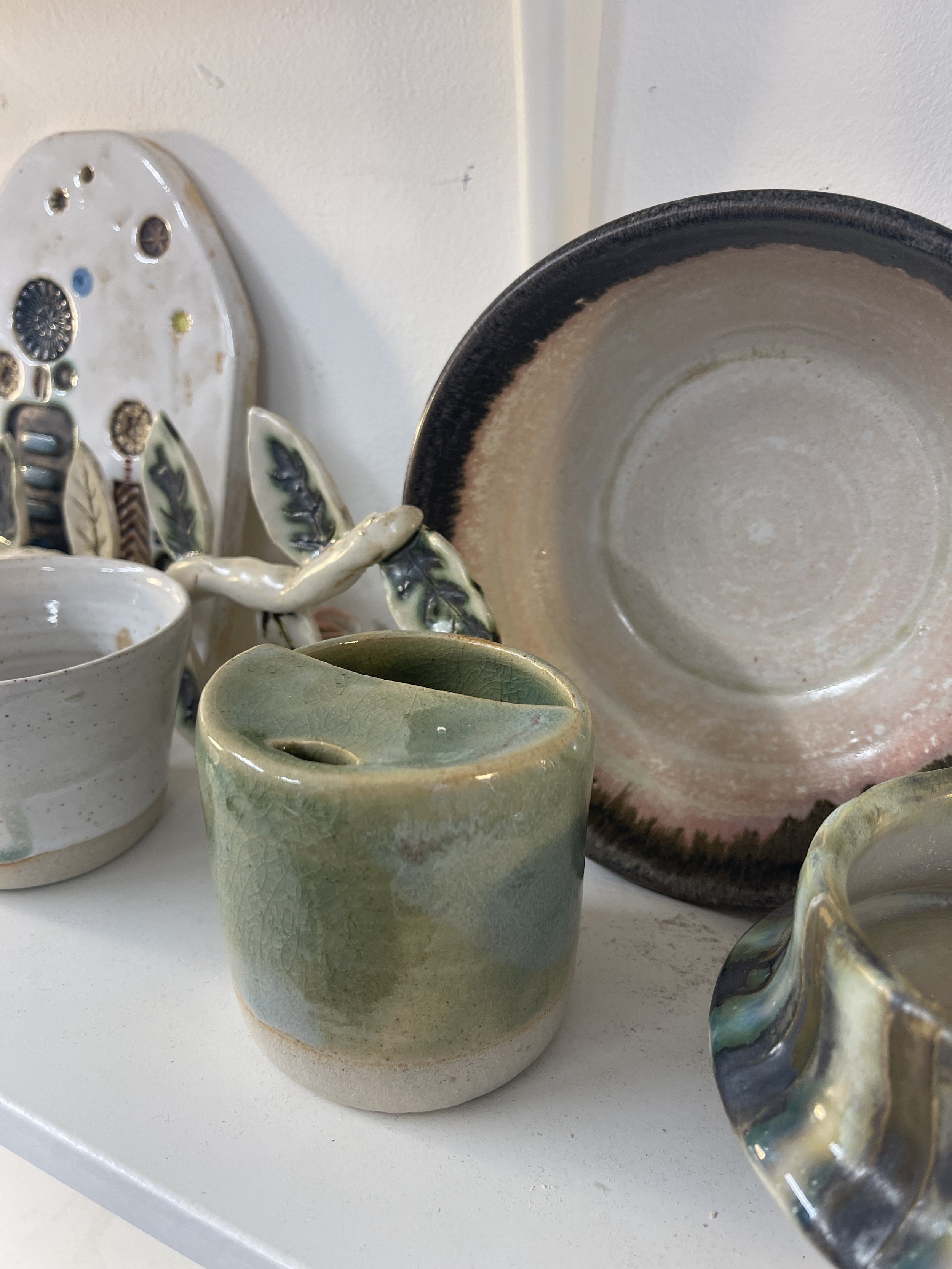
Celadon Green with Amaryllis Pink gives a turquoise hue.
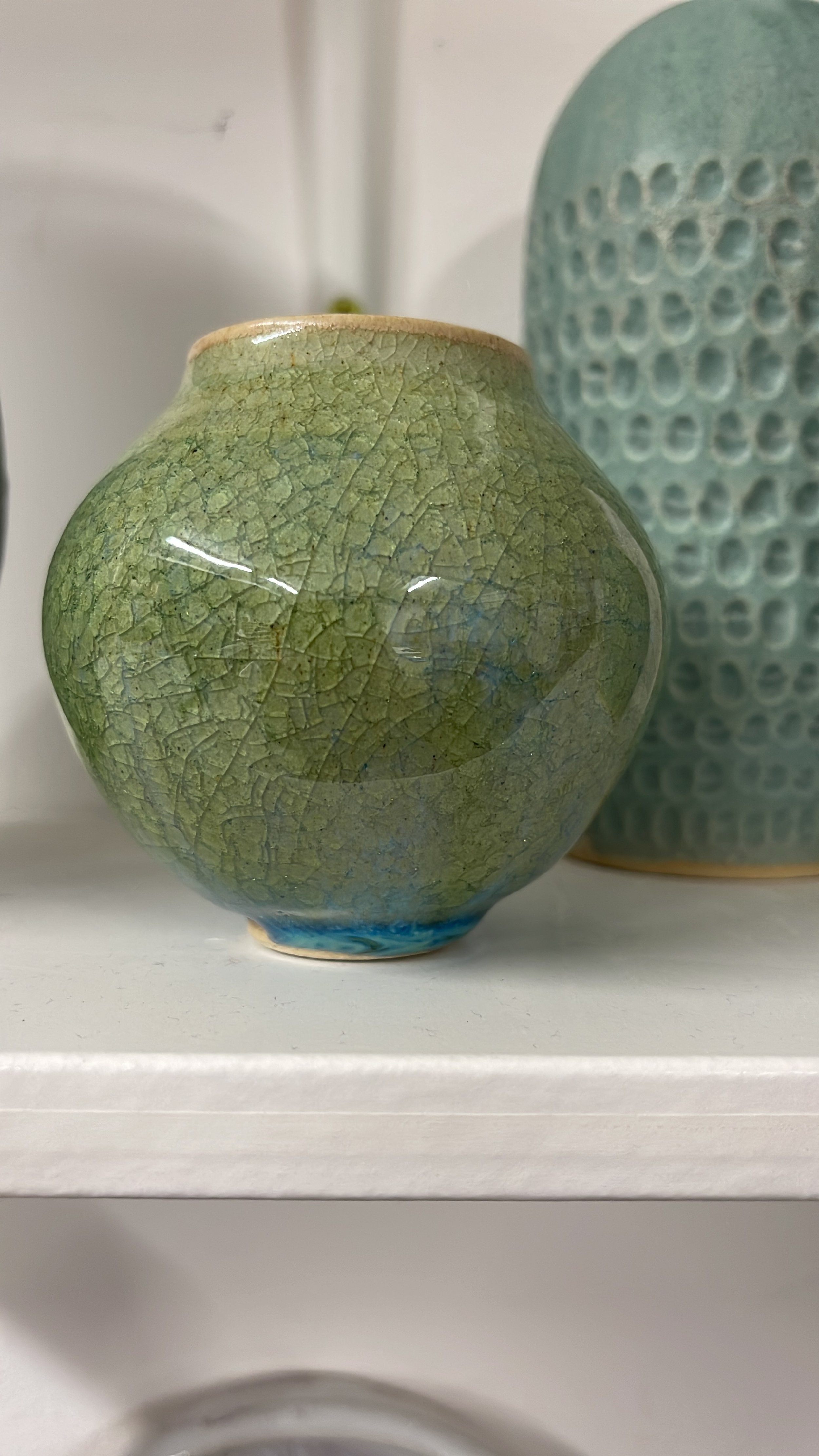
Celadon Green with a crackle effect which happens when a thick coat (longer dip) is applied. Not always guaranteed.
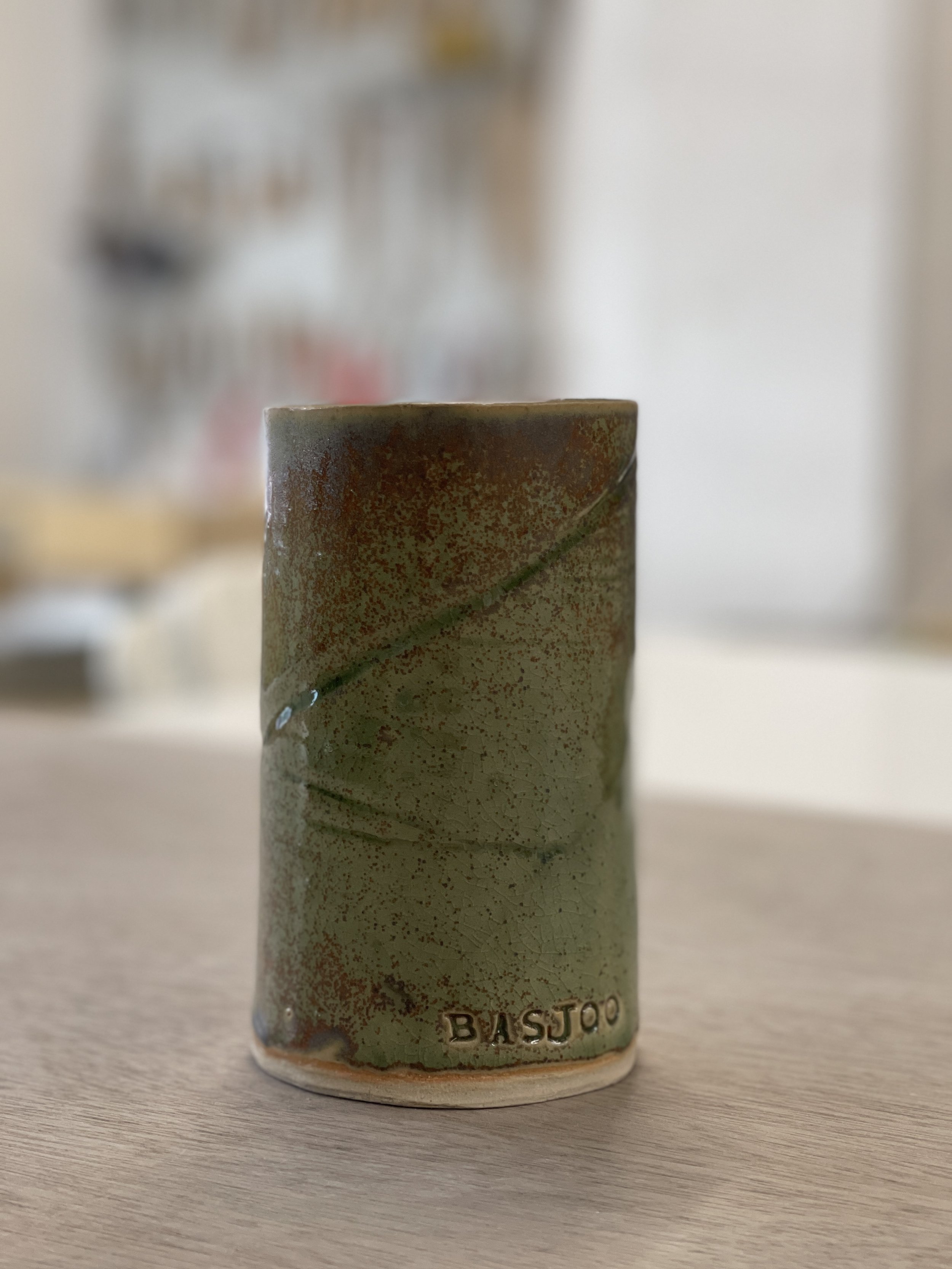
Celadon Green enhances texture.
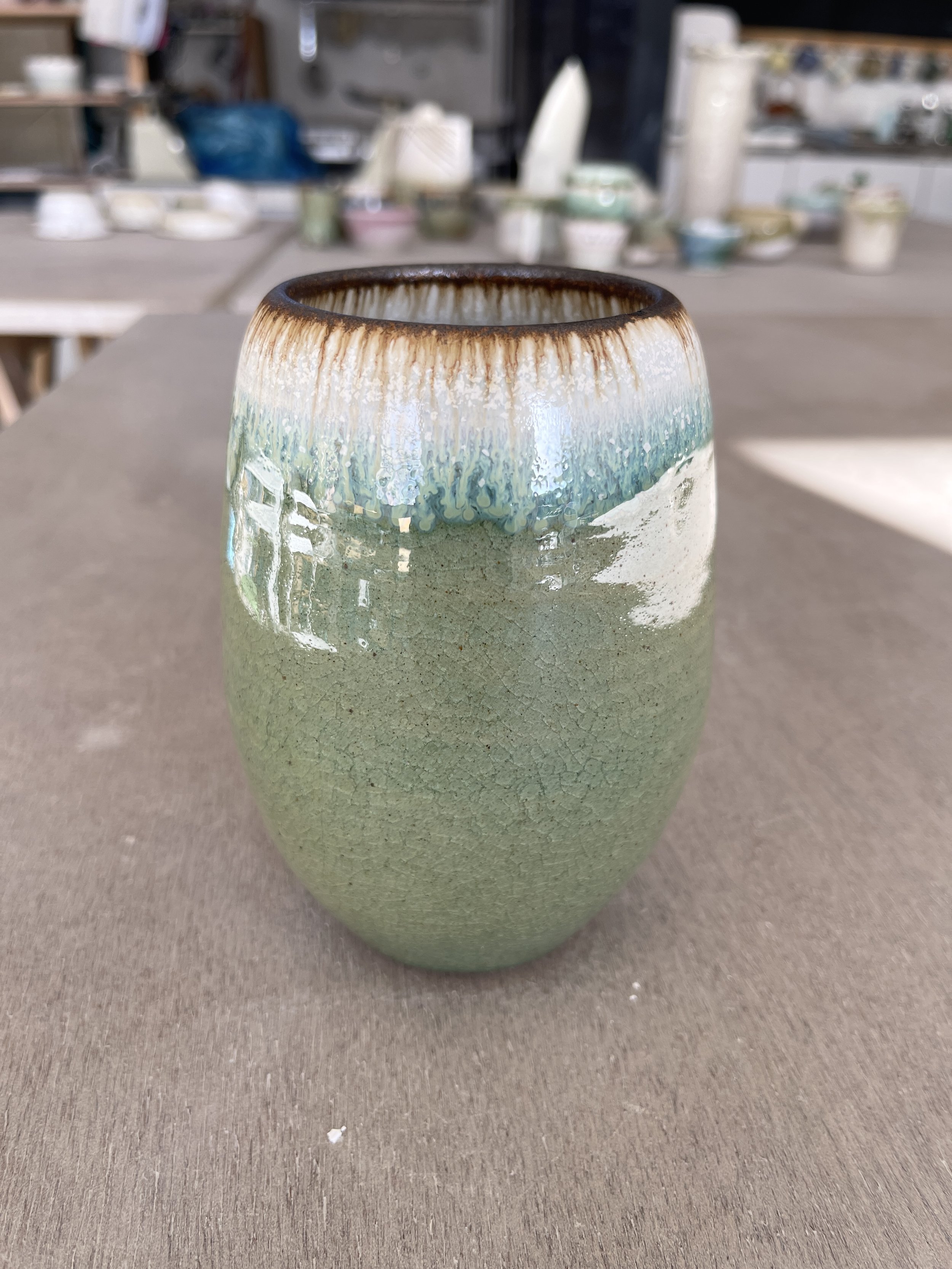
Almond white rim over celadon green body with a red/black iron oxide layer on rim.
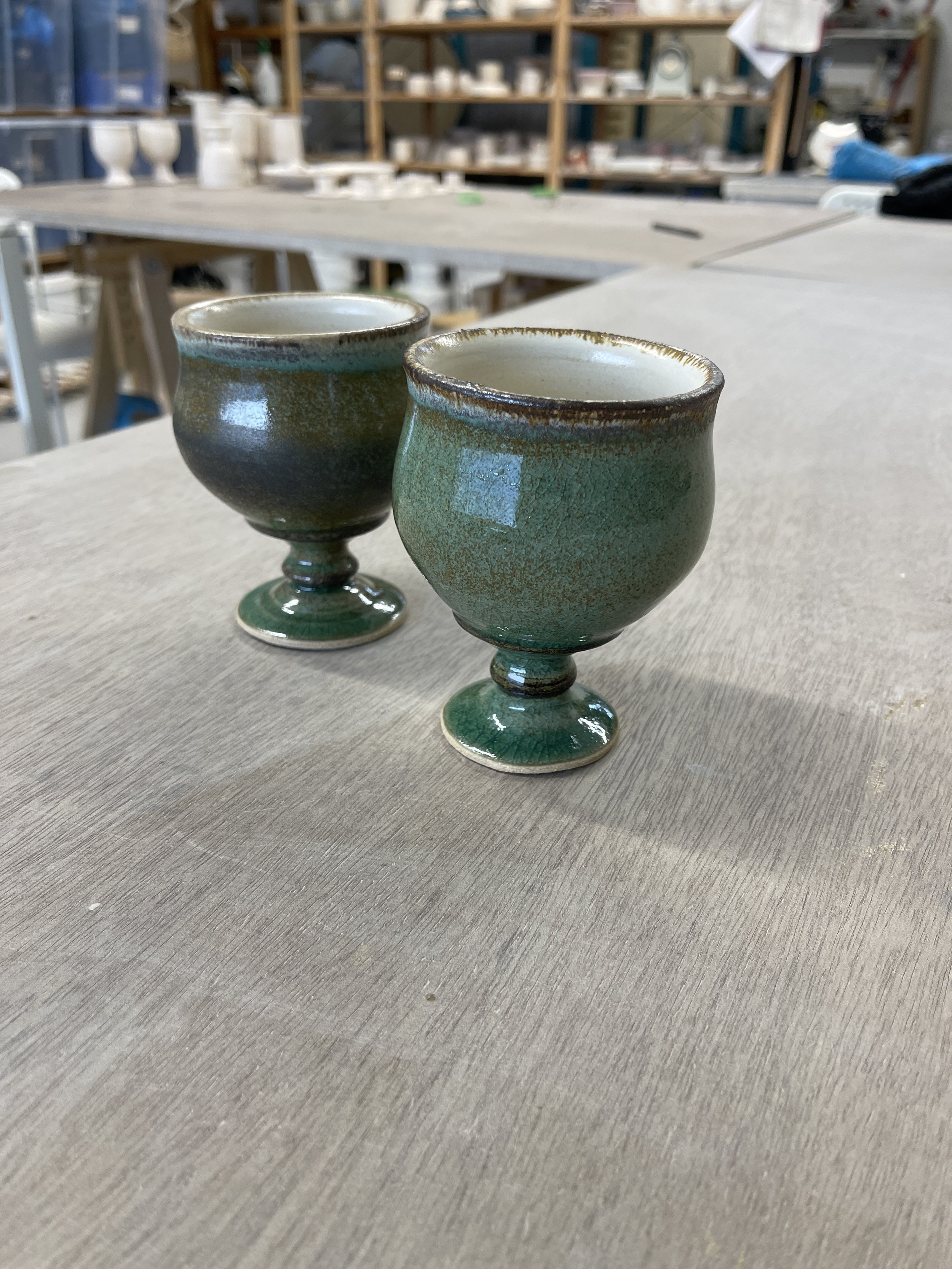
Celadon Green with almond white. Dark black/brown is usually where the glaze is thinner.
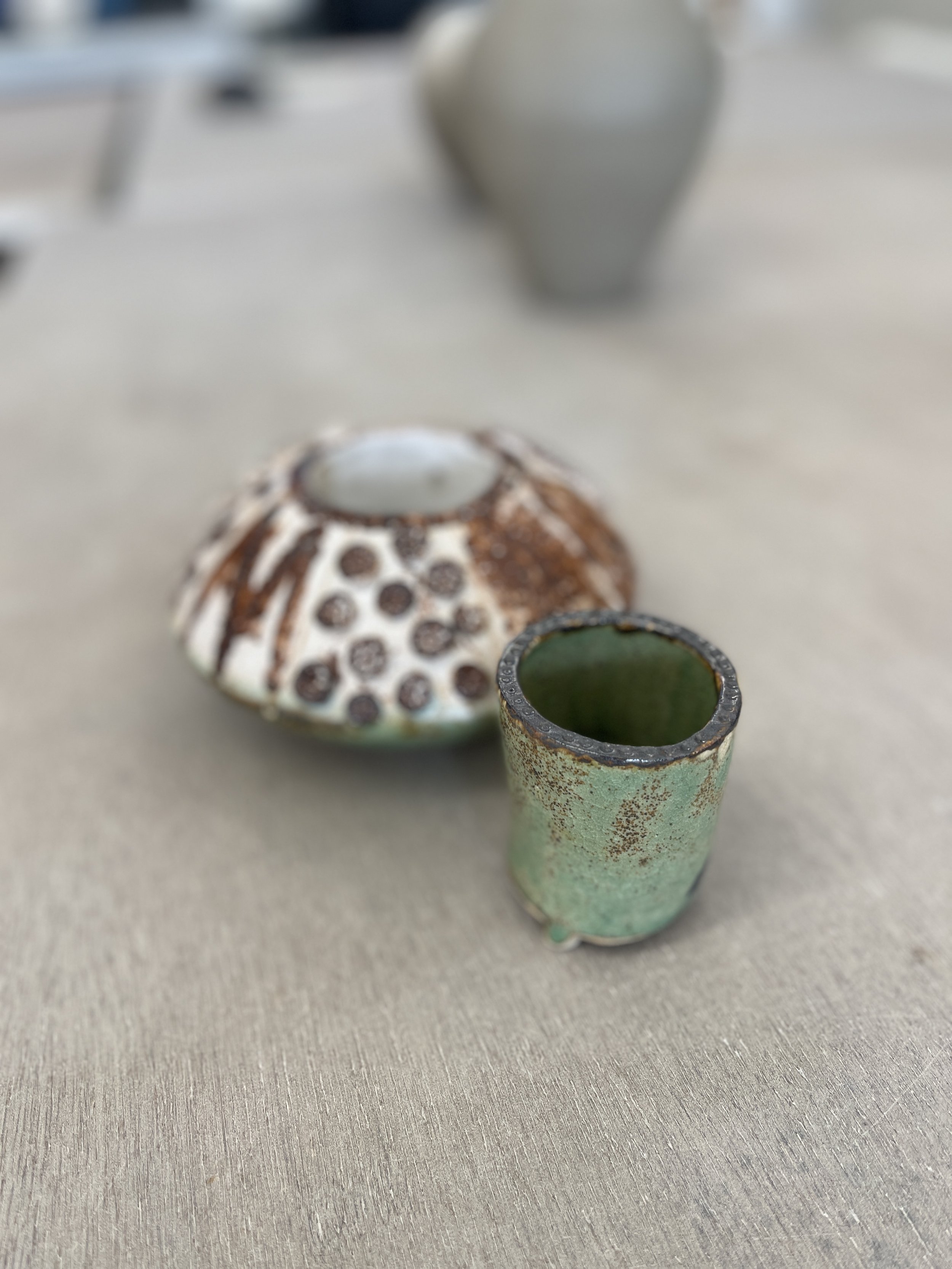
Celadon Green cup with white pot and red iron oxide.
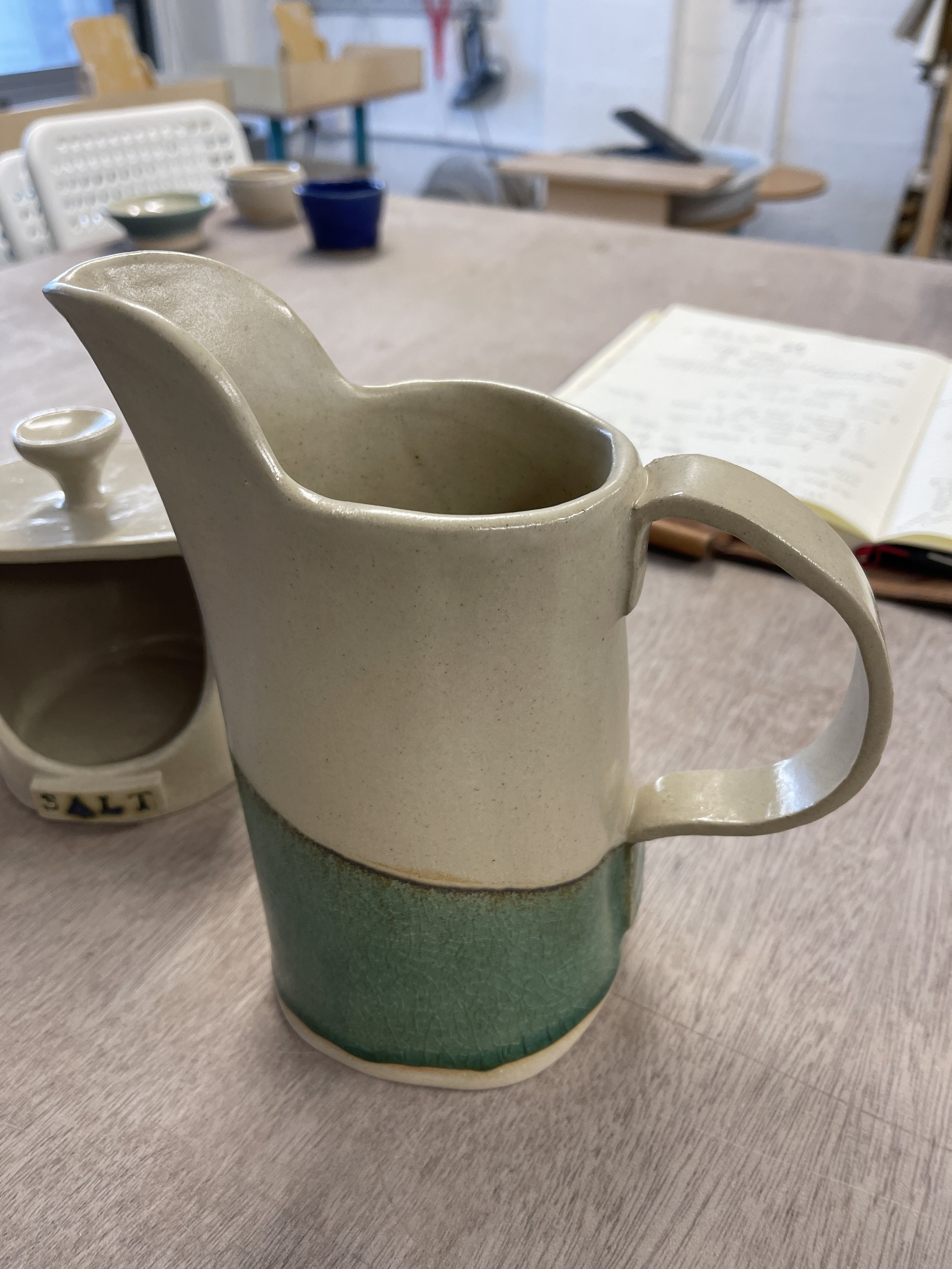
Cream and Celadon Green. A line of orange appears where it migrates with the clay.
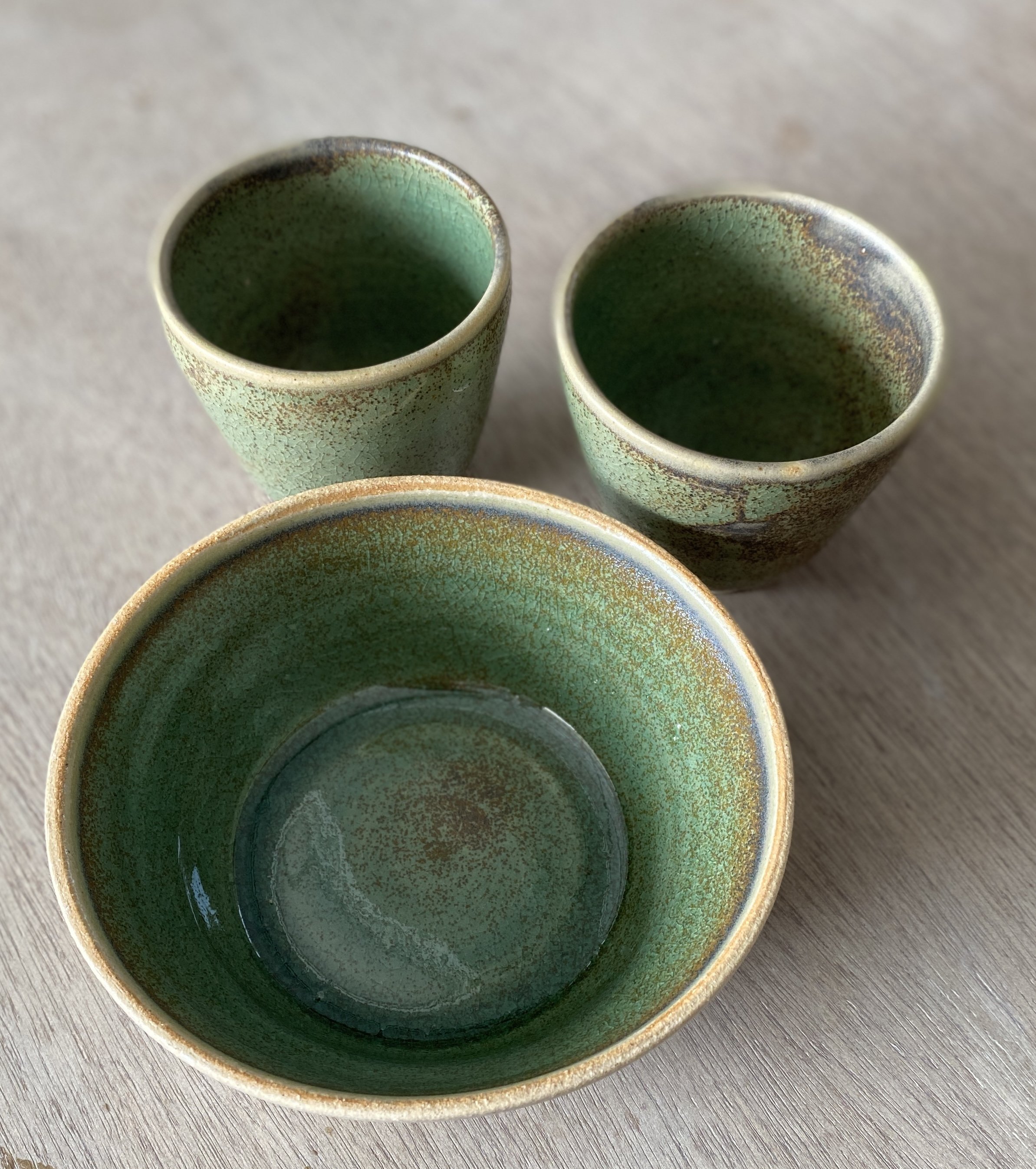
Celadon Green falls on edges exposing some of the clay.
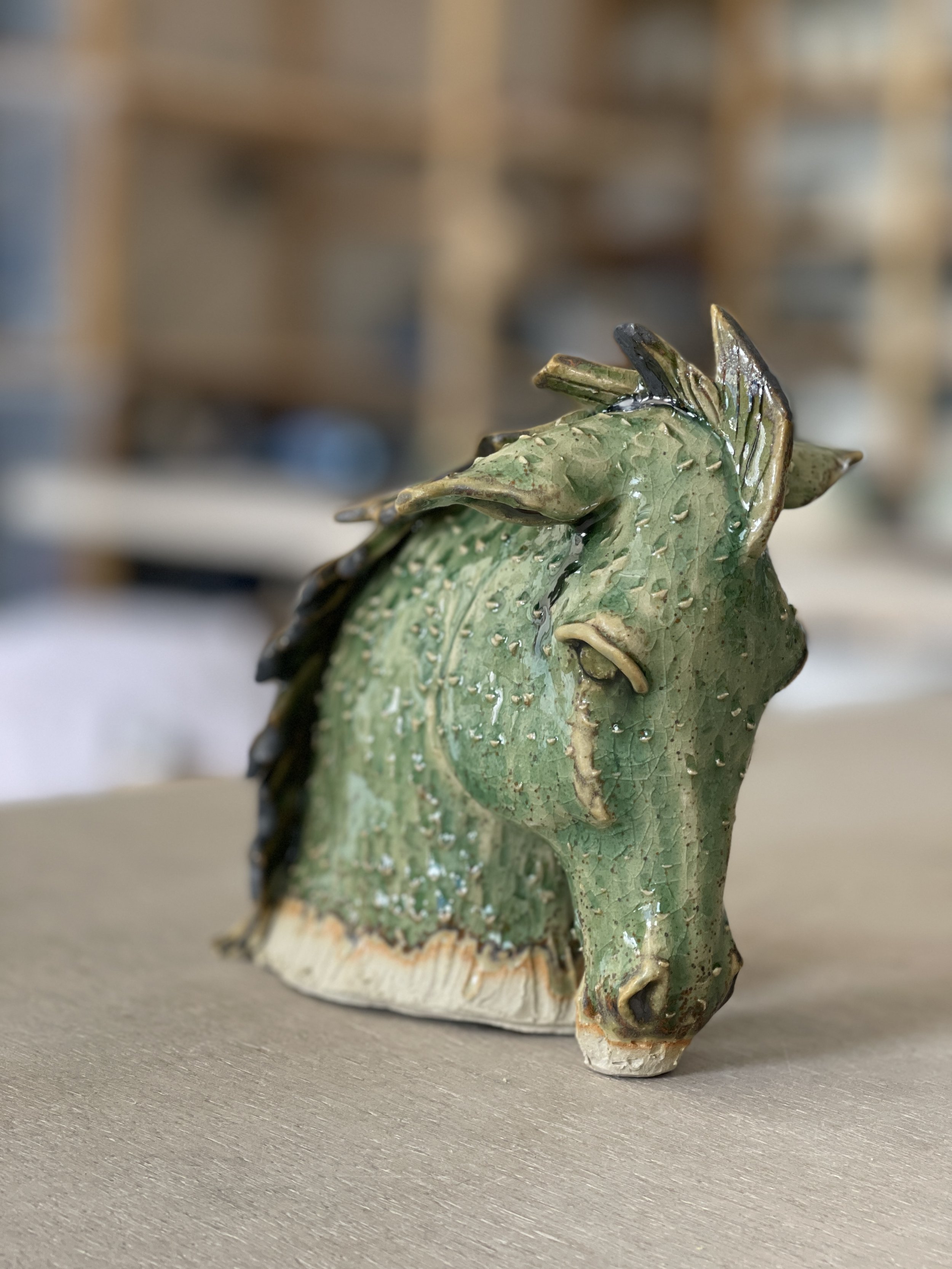
Copper Oxide on bisque under celadon green.

More pots in Celadon Green.
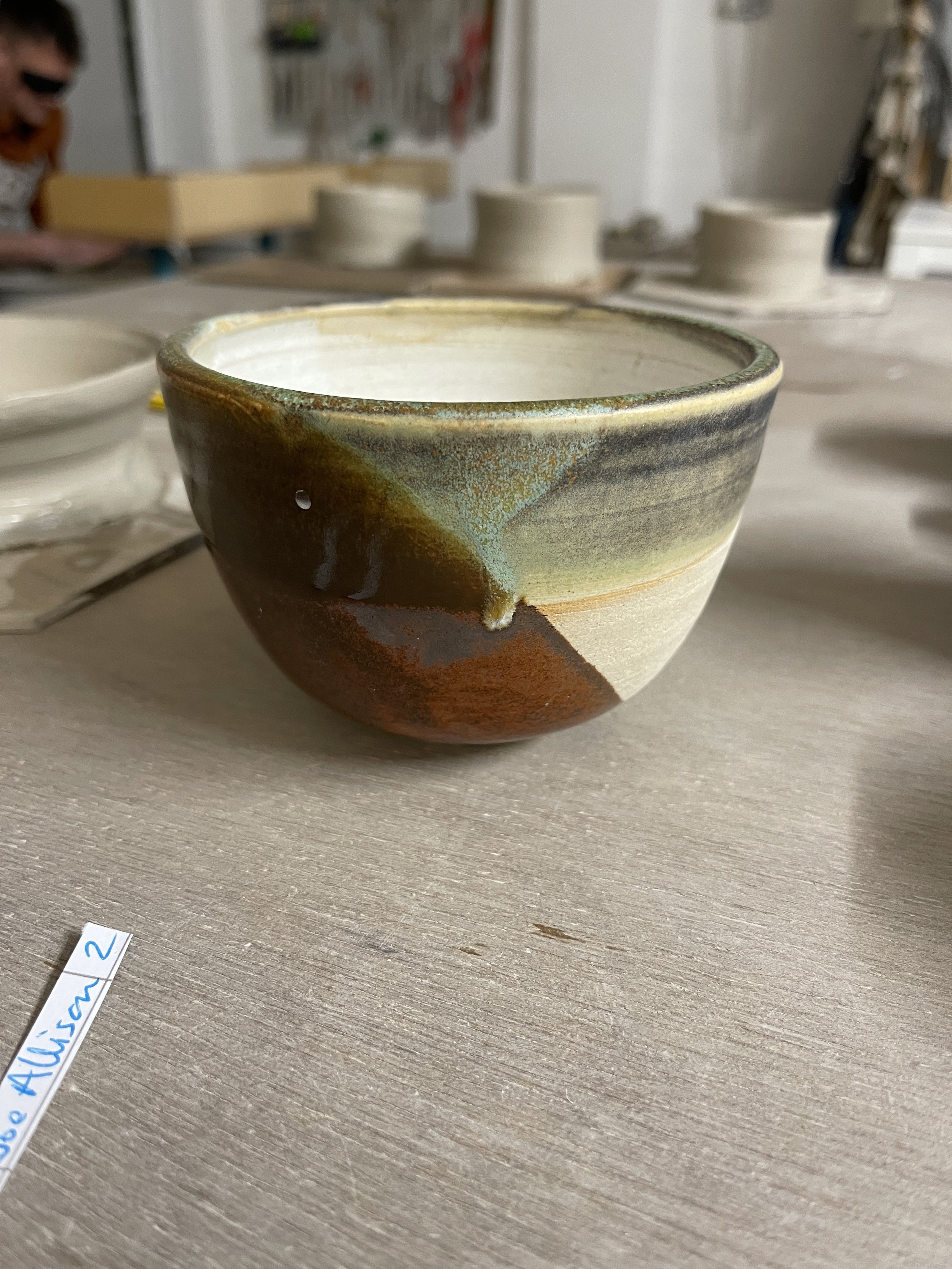
Jess's thrown bowl with a celadon green rim over copper red. Hugh of migrating iron gives the orange line.
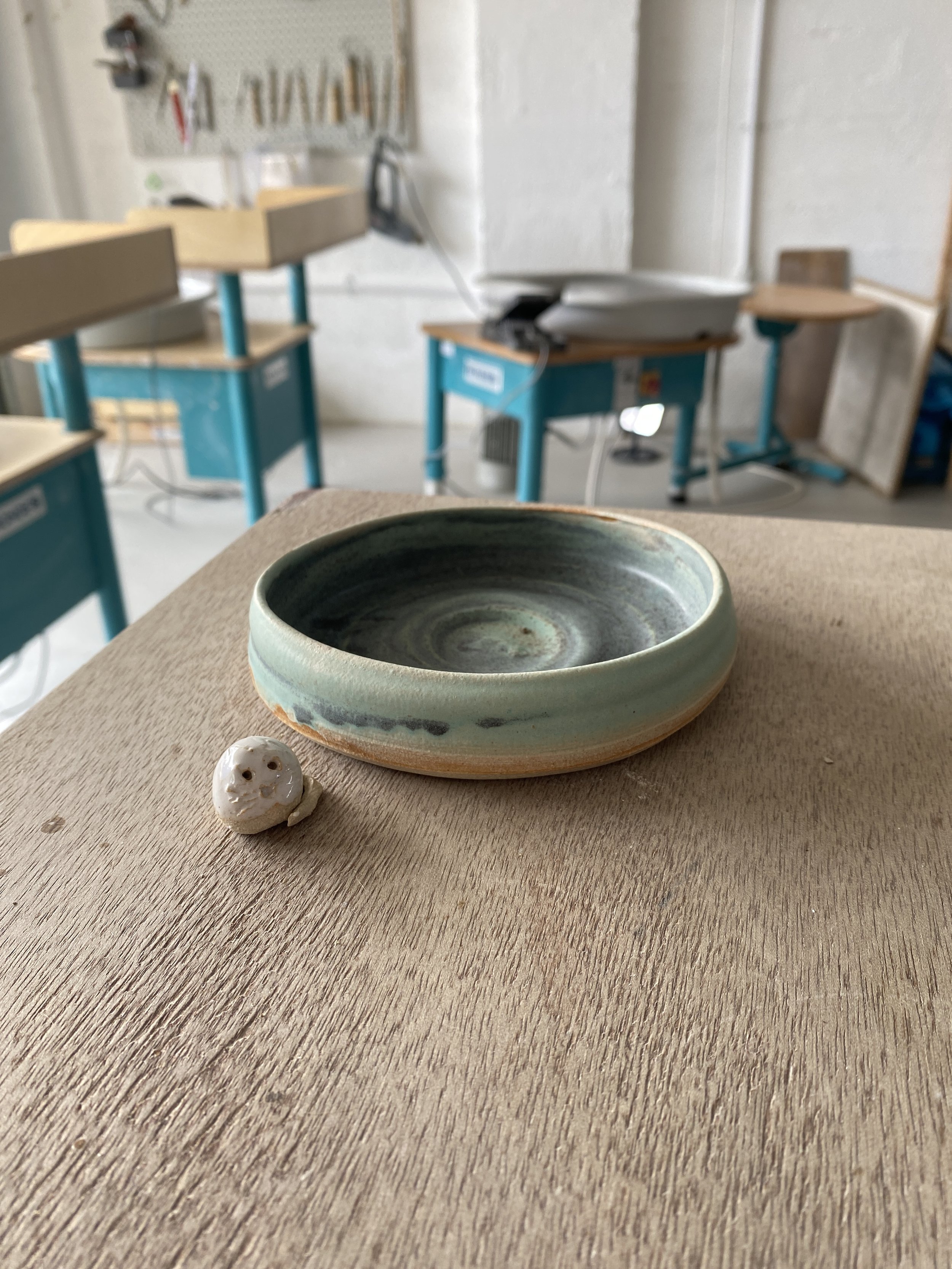
Copper Patina is not a stable glaze - avoid using on surfaces in contact with food.
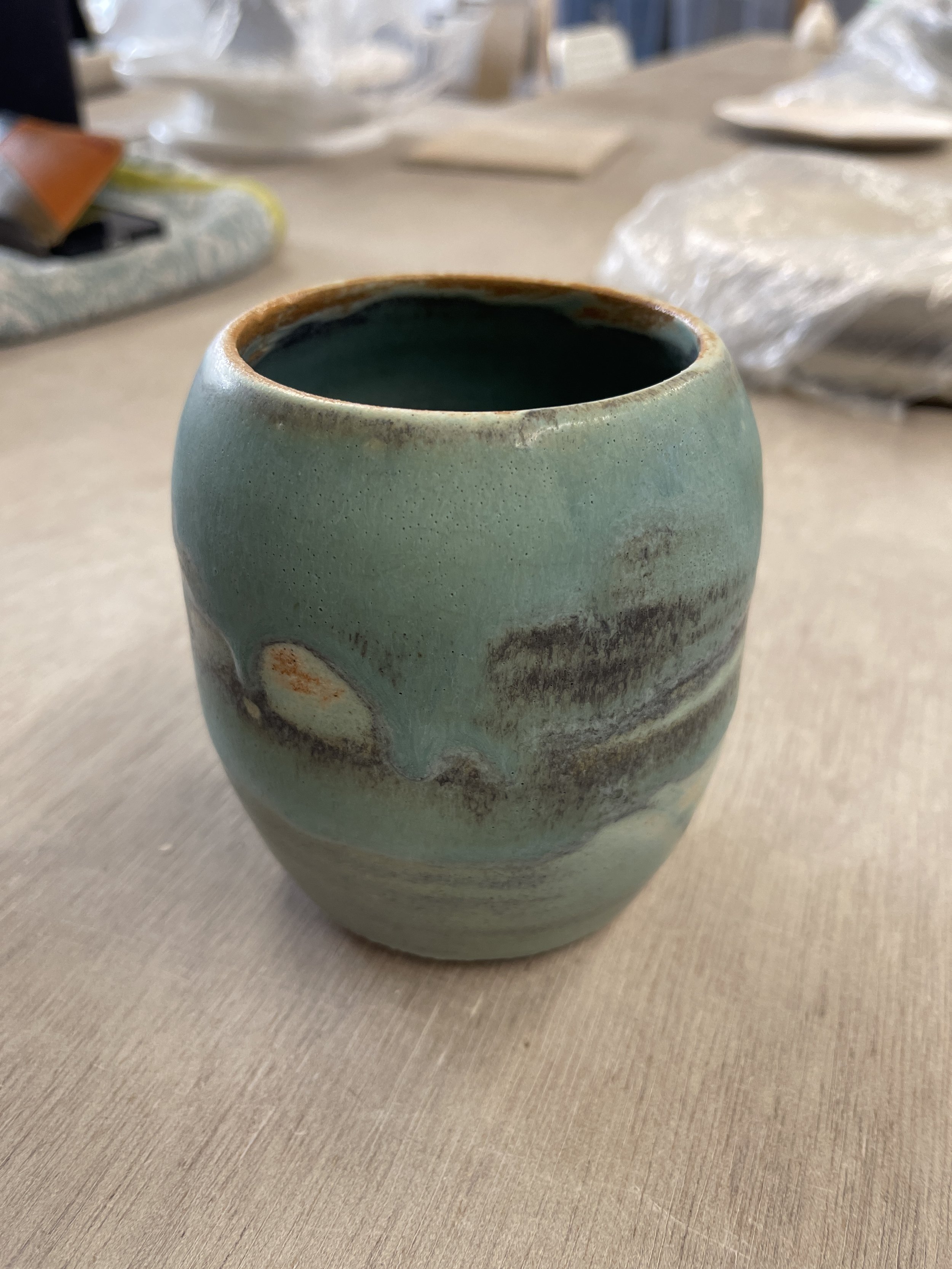
Patina is a bit random - can appear where the glaze is thicker but difficult to predict.
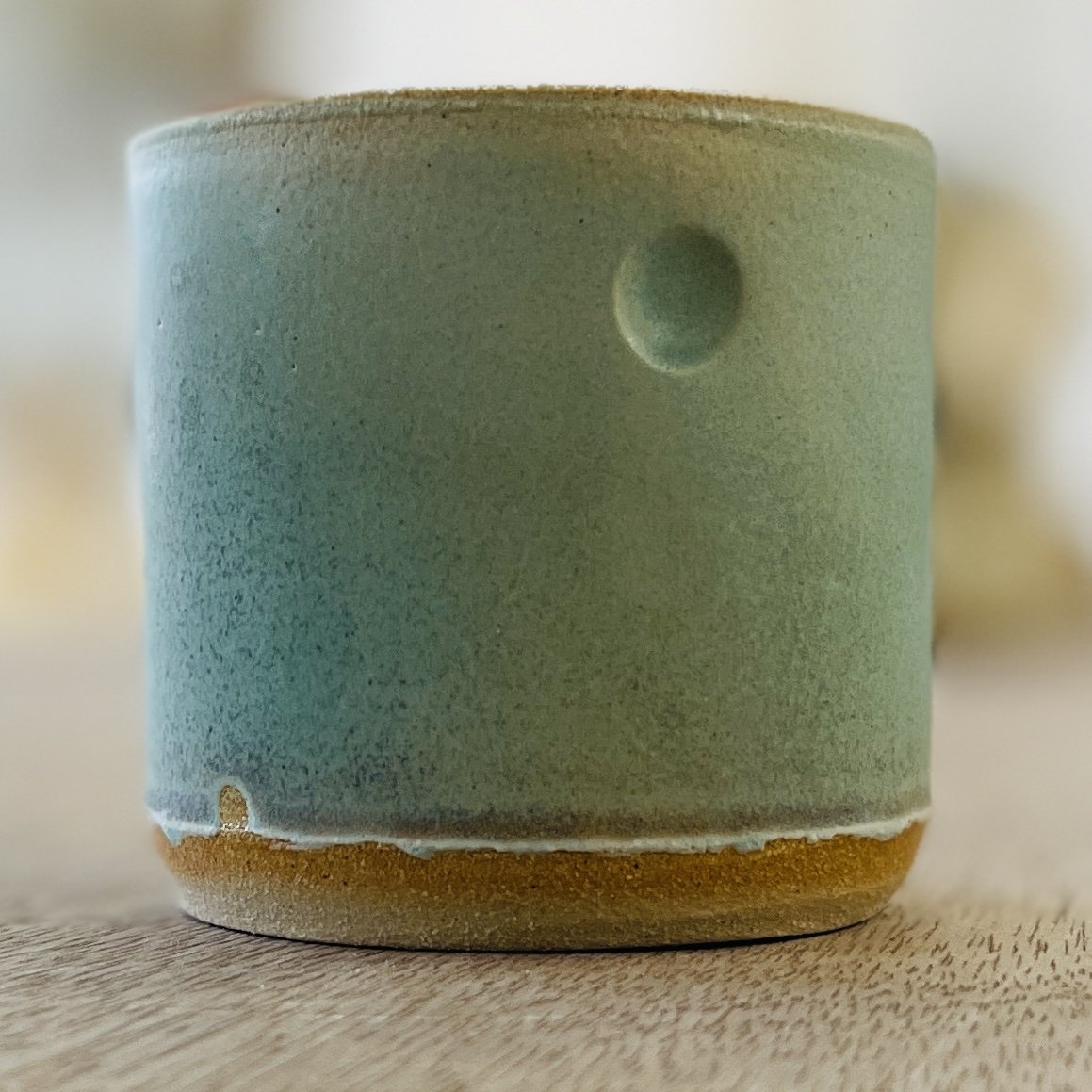
Quicker dip gives lighter tone. Orange hue is pleasant in contrast.
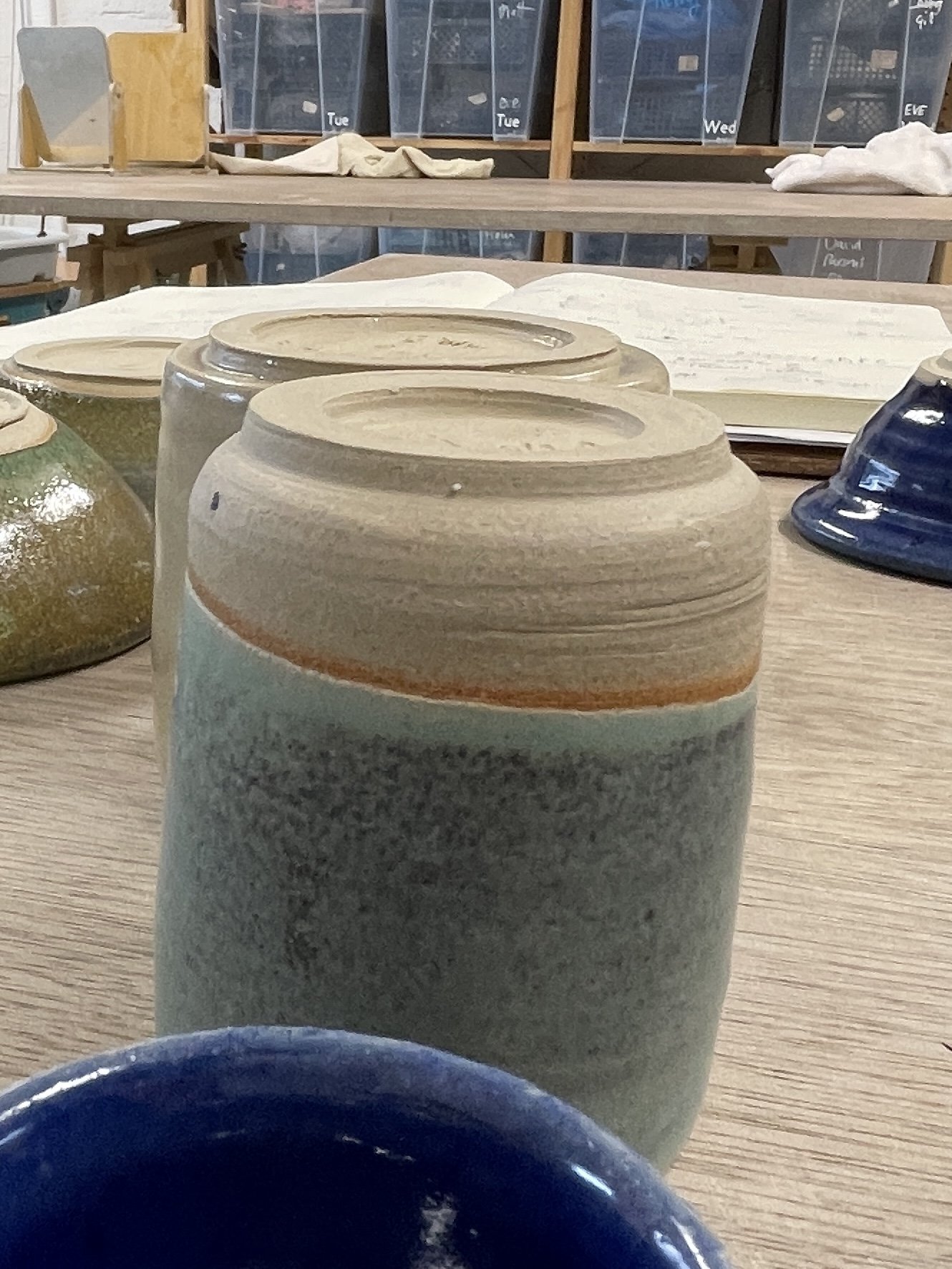
Orange tone where glaze migrates on surface of clay.
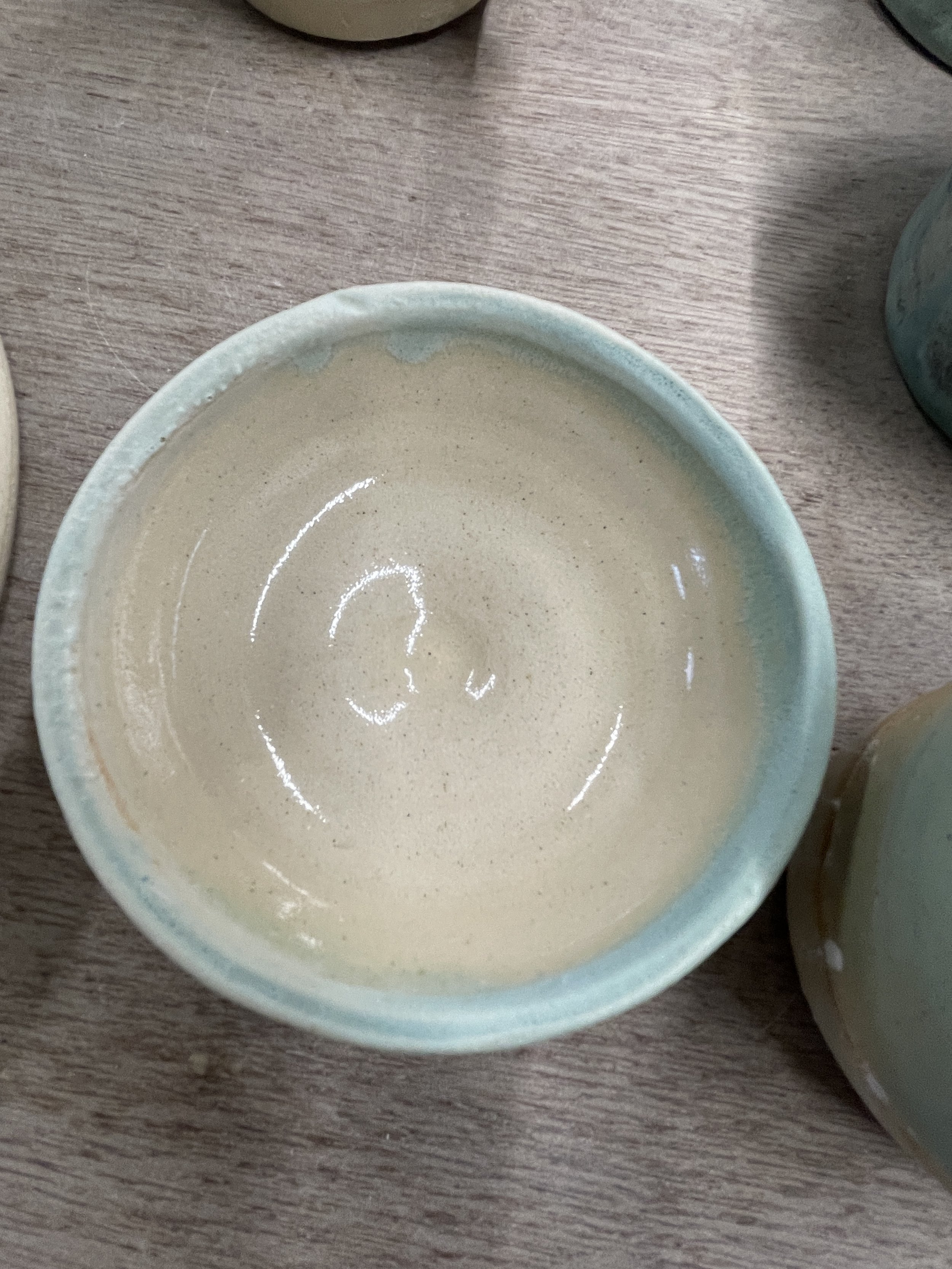
Transparent inside when used with food is a nice glossy contrast.
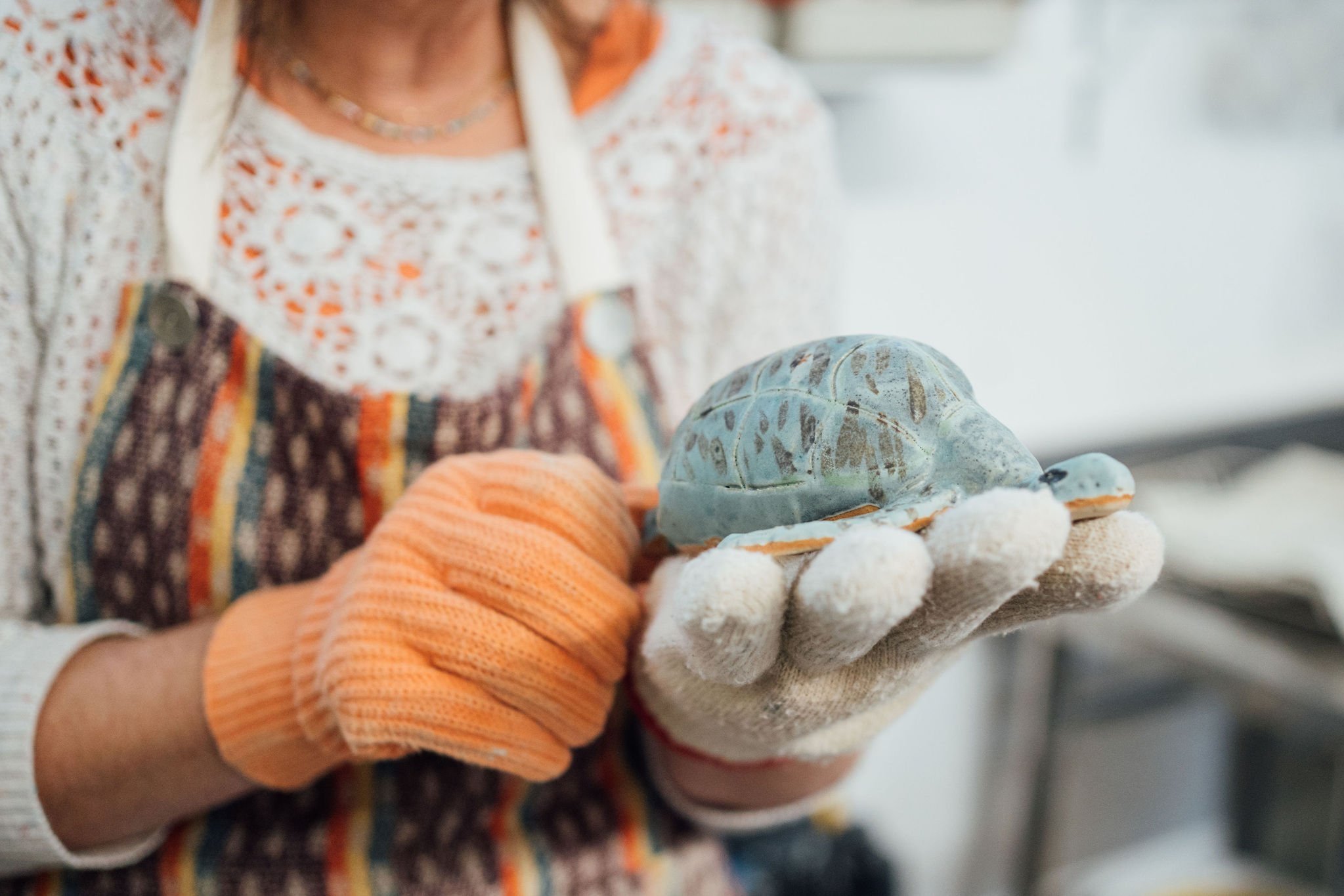
Texture enhanced with black iron oxide works well.
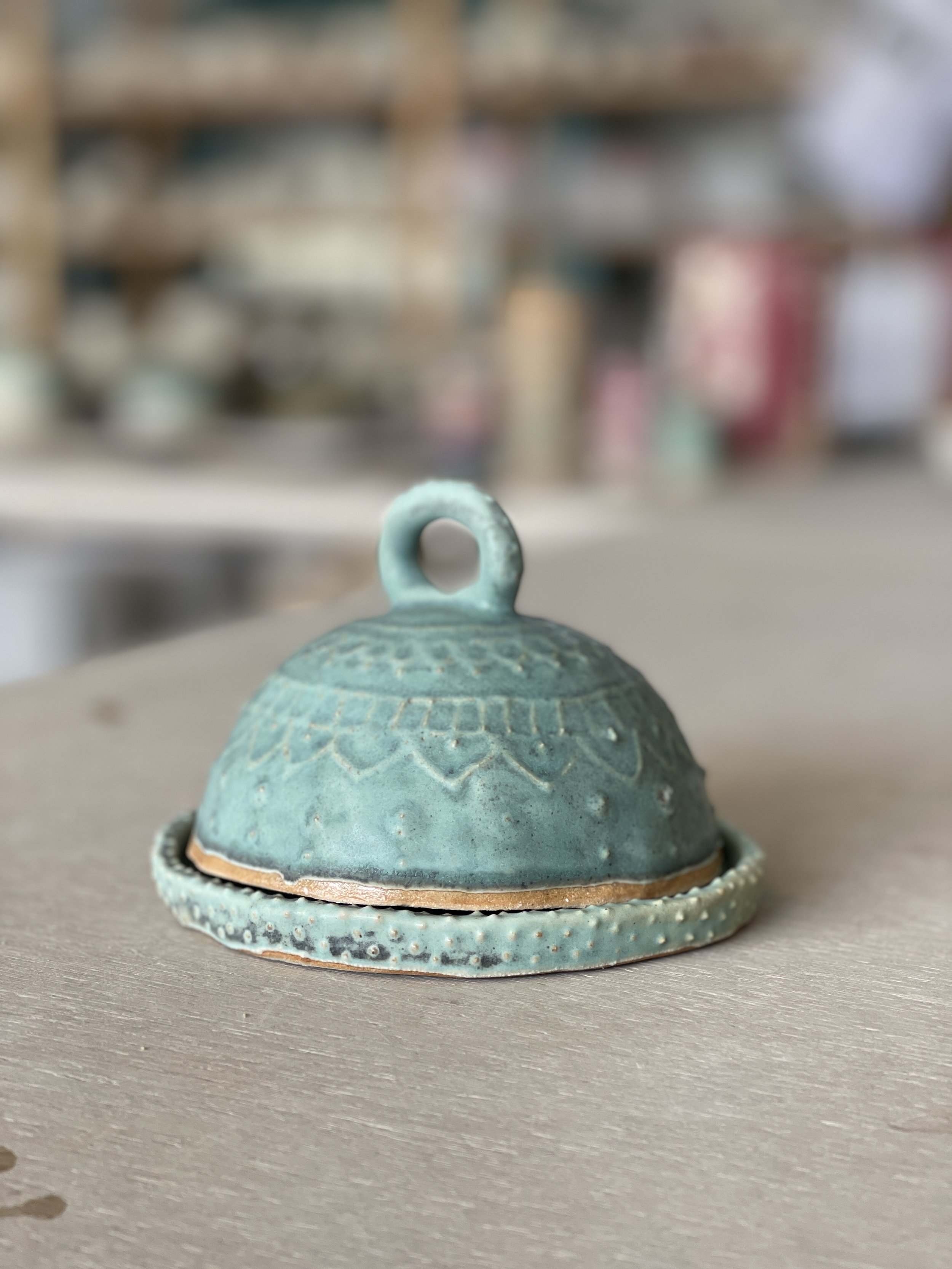
Copper Patina is a matt glaze - opaque and a lovely green/blue.
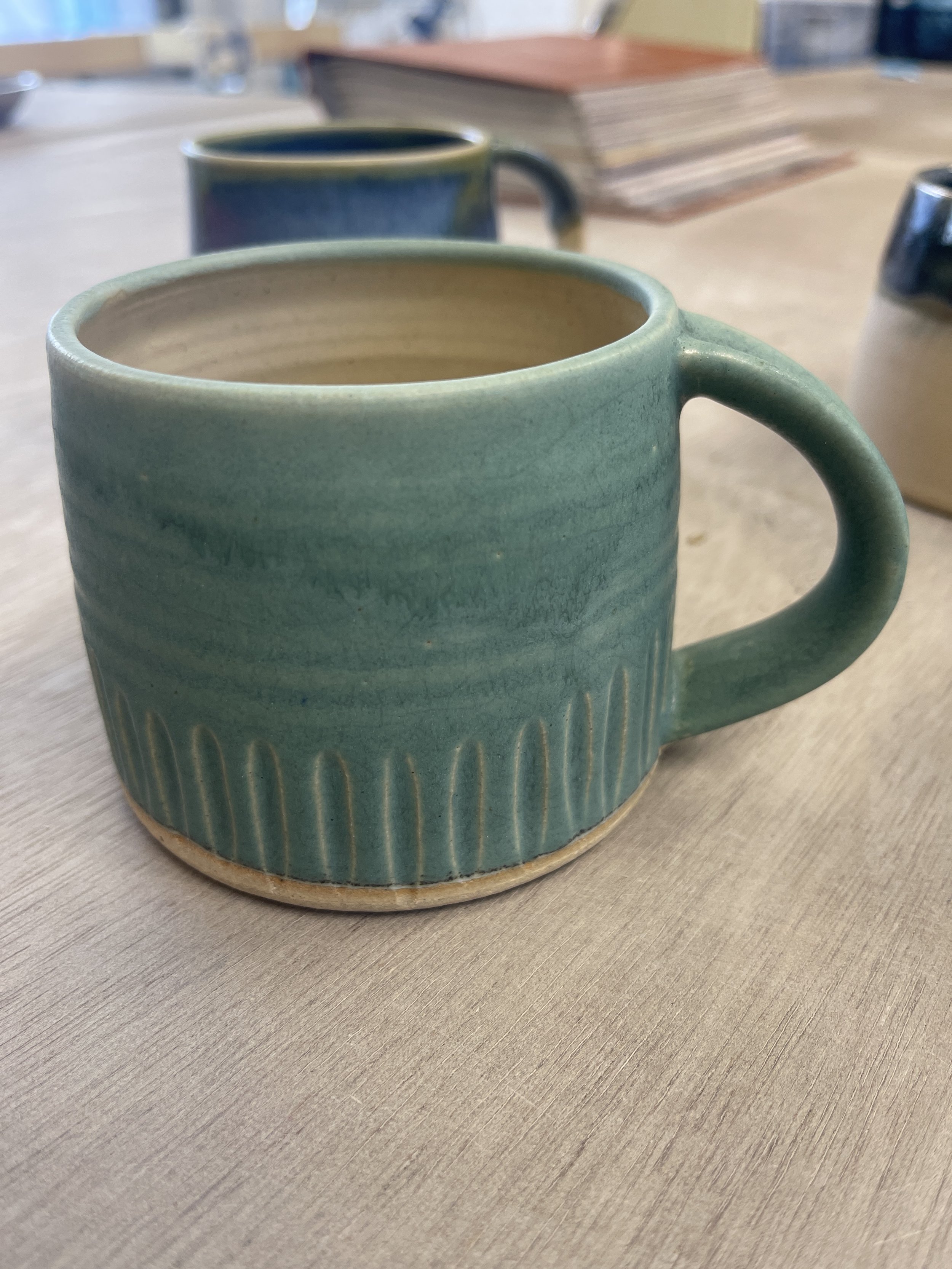
Mug with transparent inside.
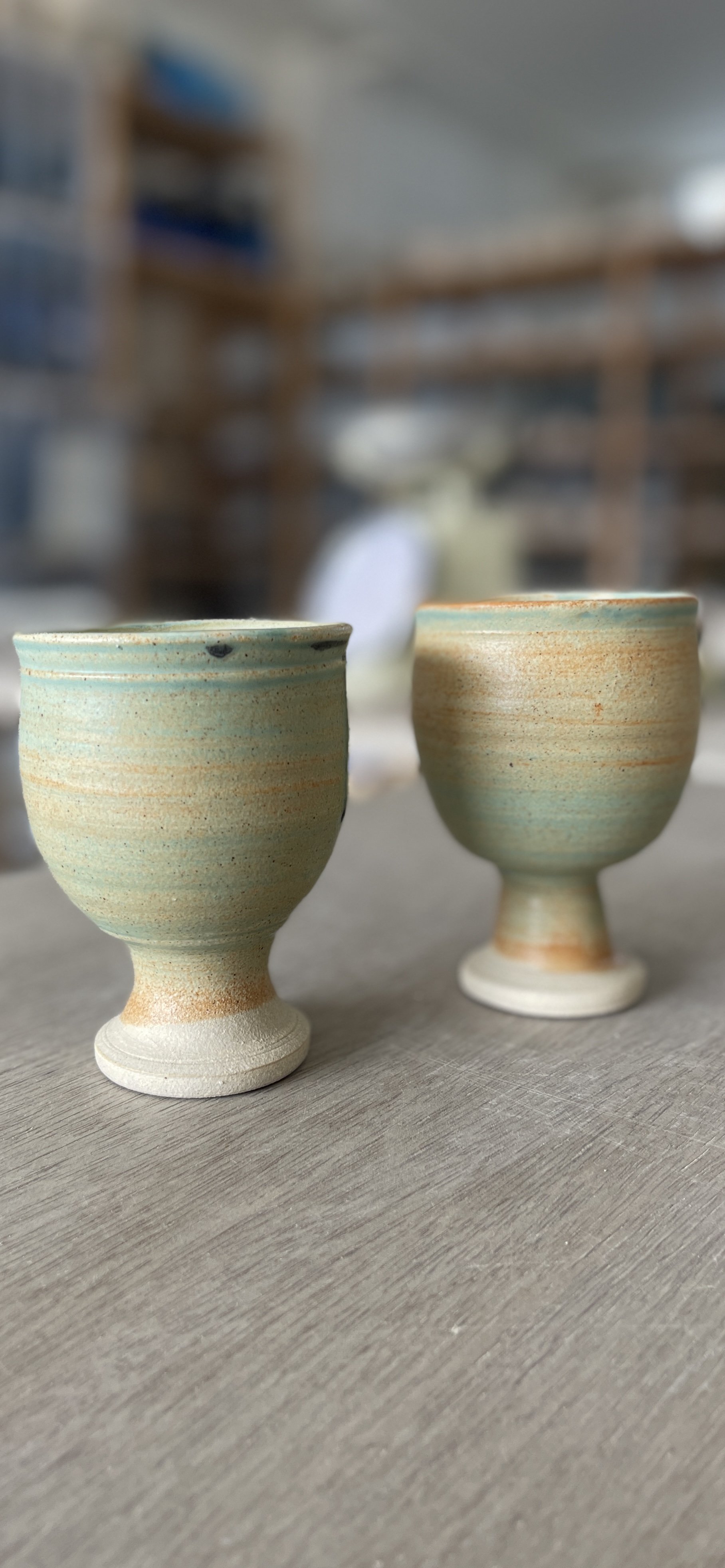
Goblets in a copper patina with transparent inside. Quick 1 second dip gives less coverage.
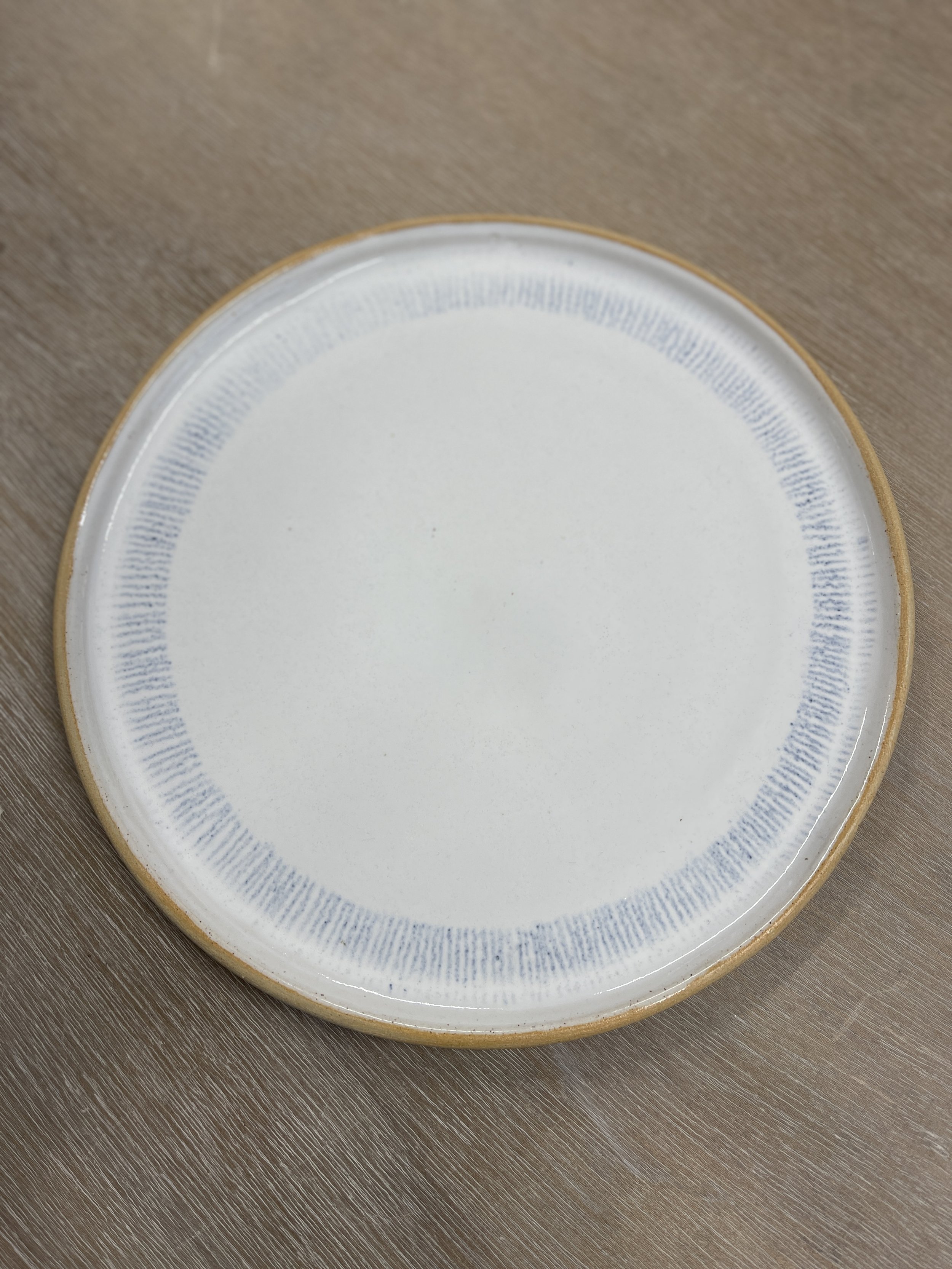
Glossy White plate with oxide pencil lines
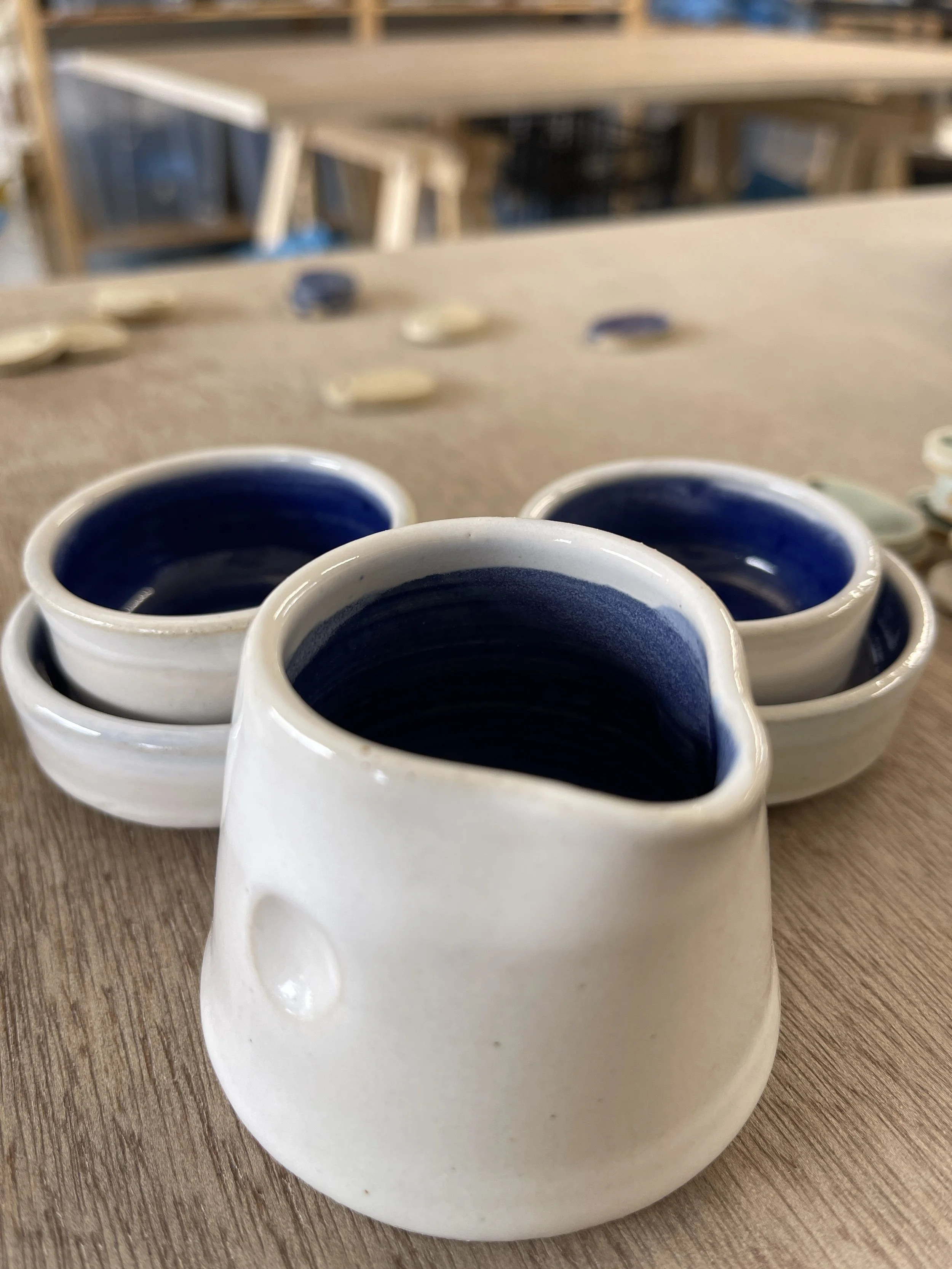
Glossy white with blue interior
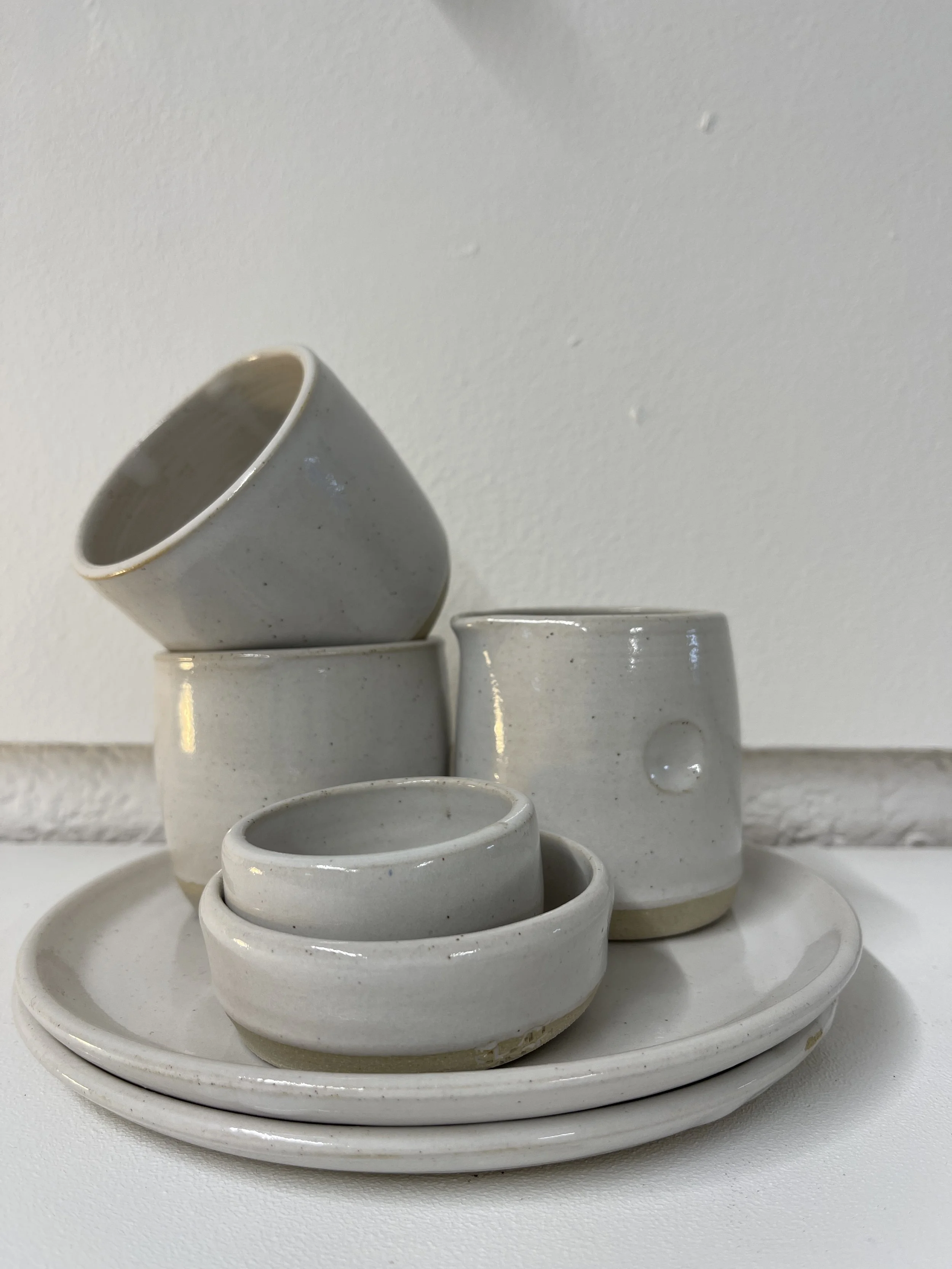
White falls nicely to accentuate edges.
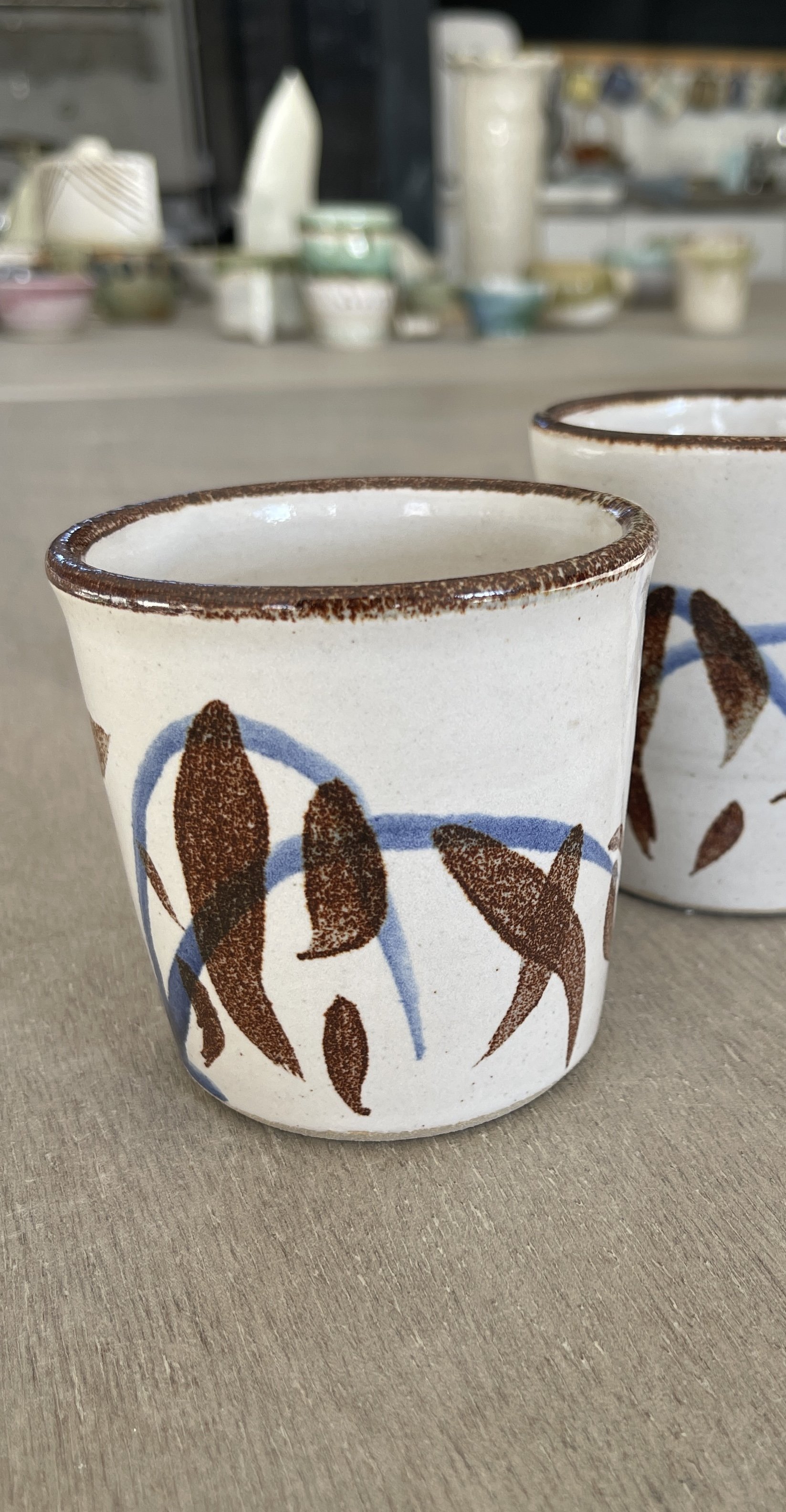
Brown oxide paint marks with cobalt under glossy white.
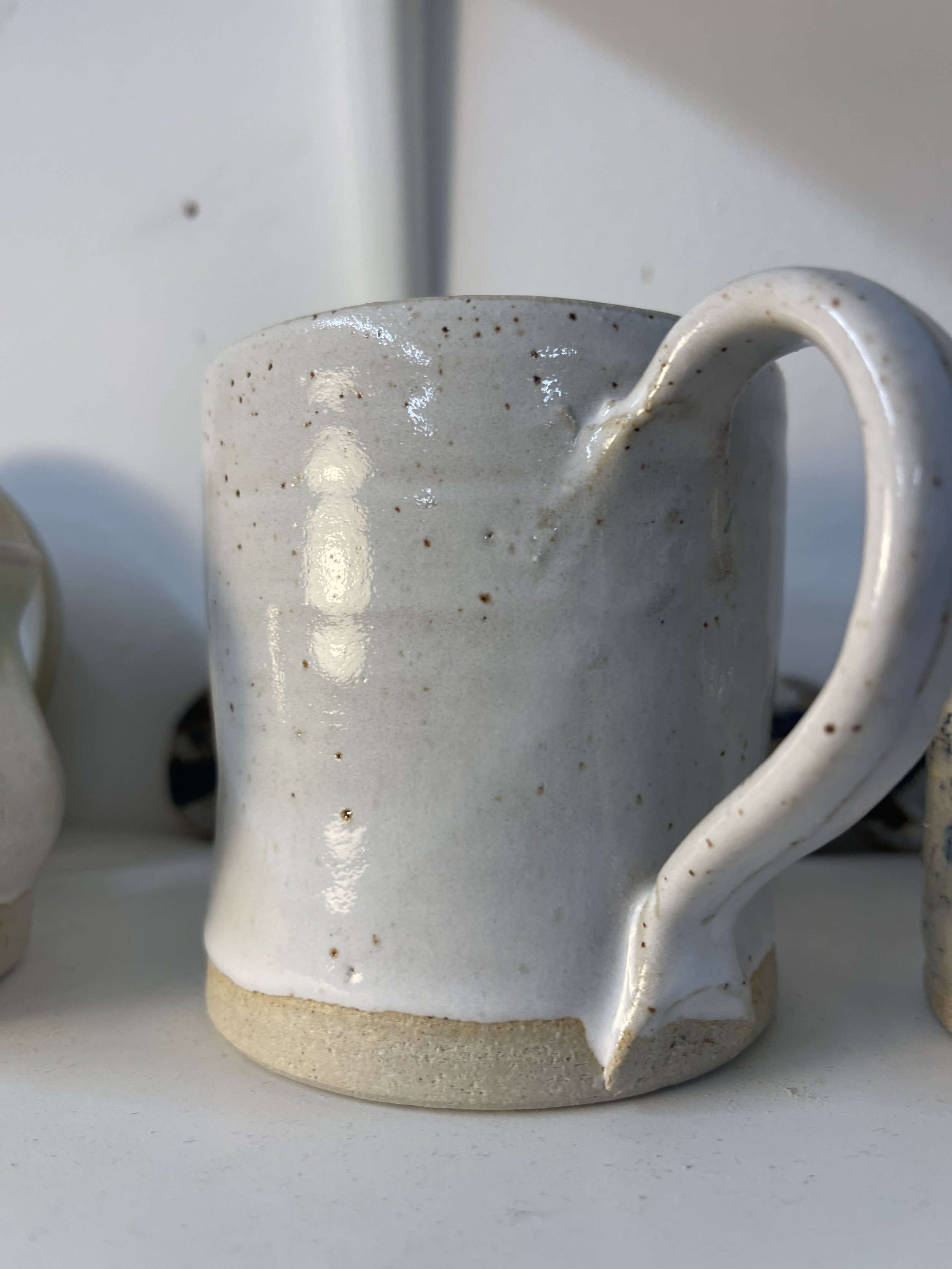
Quick dip allows speckles of iron in the clay to appear.
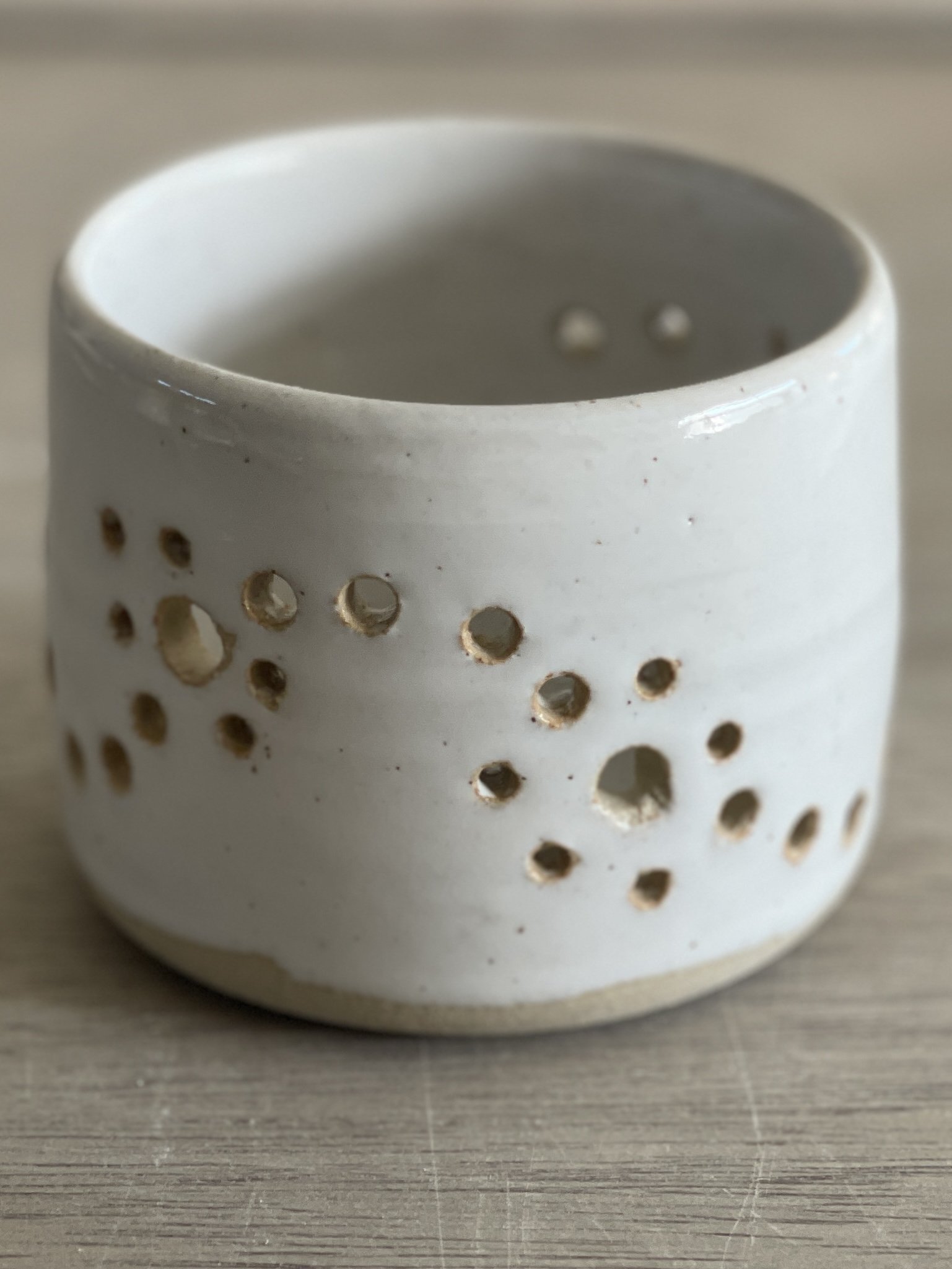
Edges often have a brown/orange hue to them.
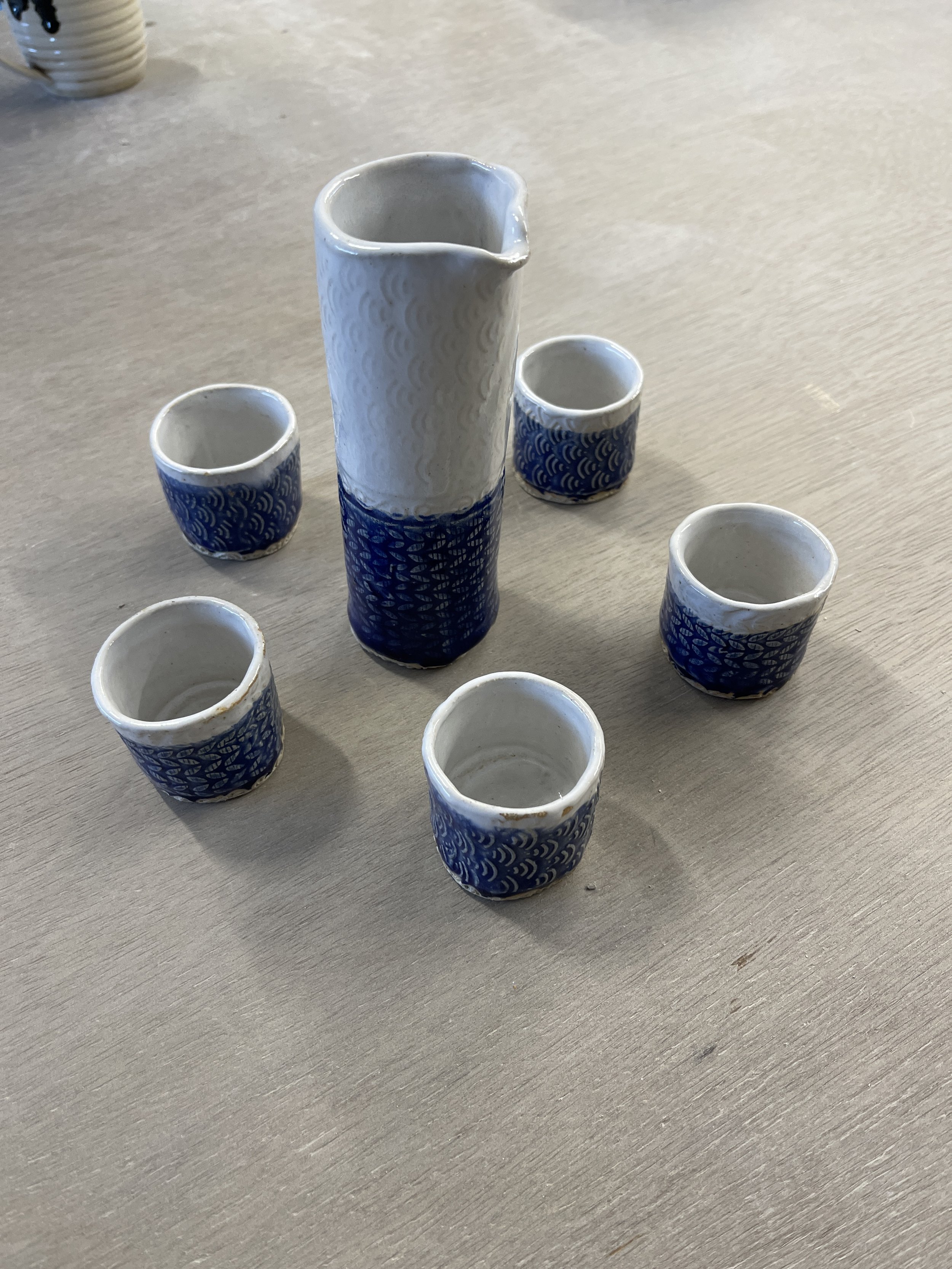
Cobalt Blue Glossy with White
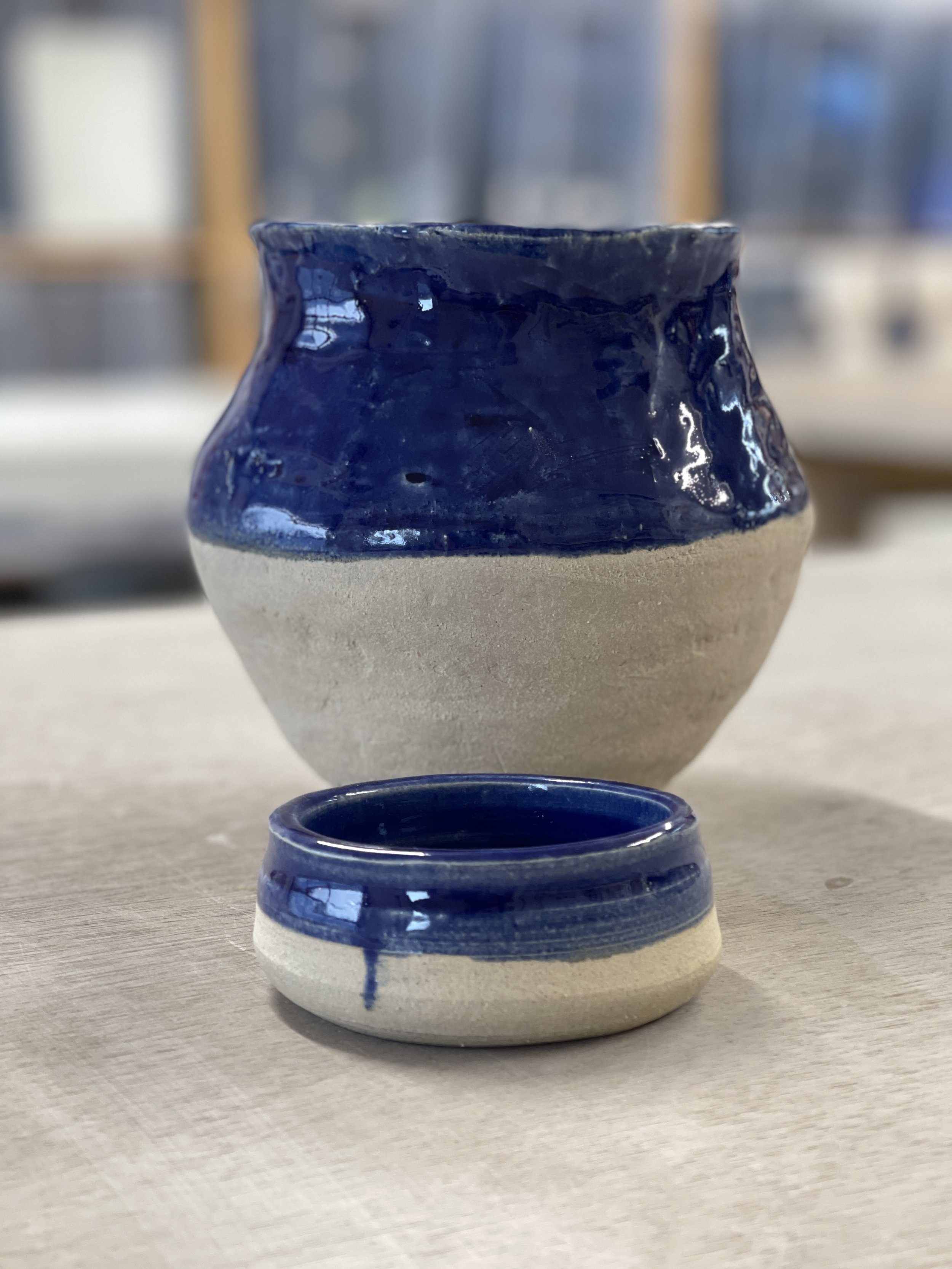
Cobalt Blue over stoneware clay
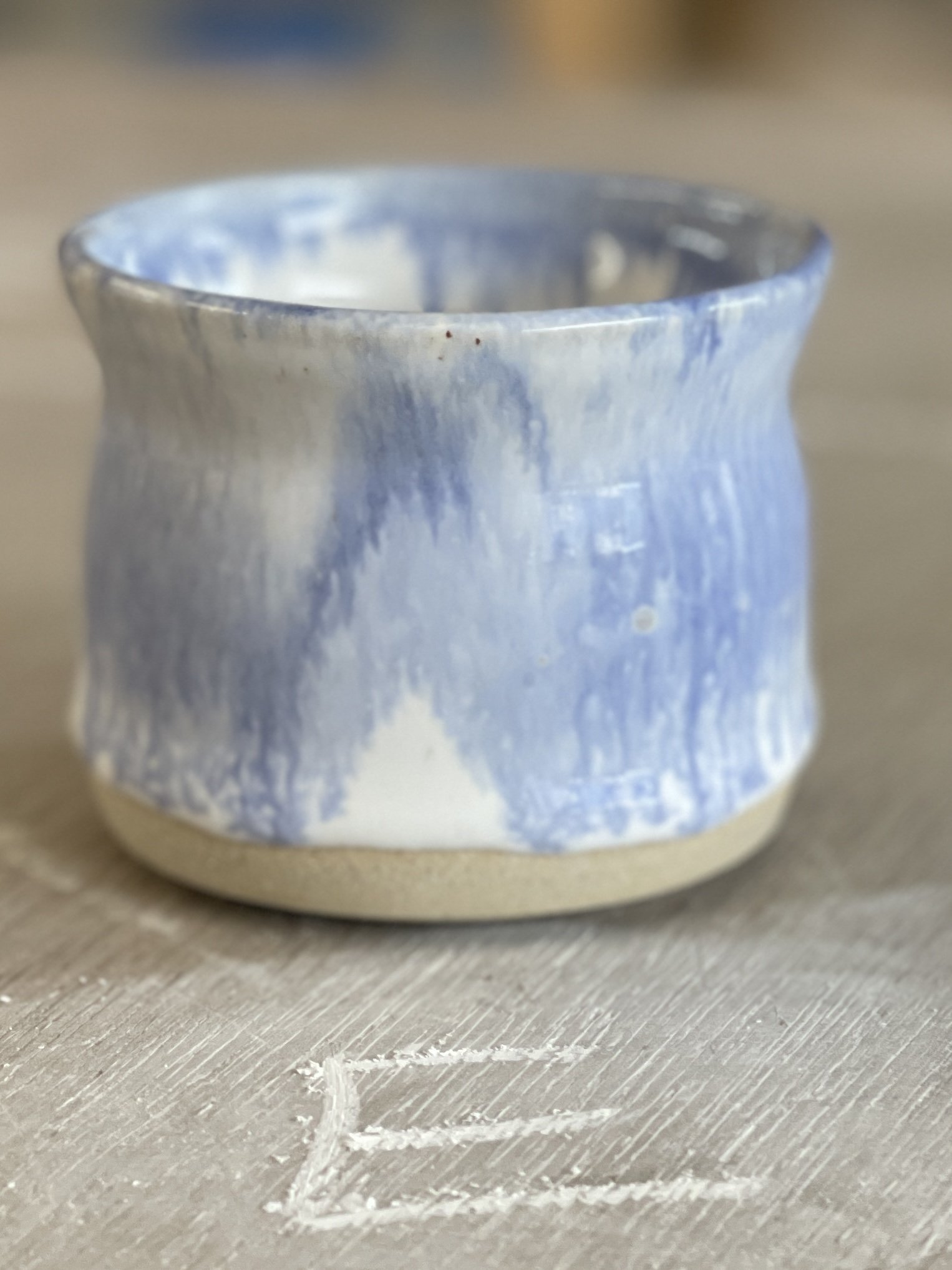
Glossy White with rim of cobalt blue
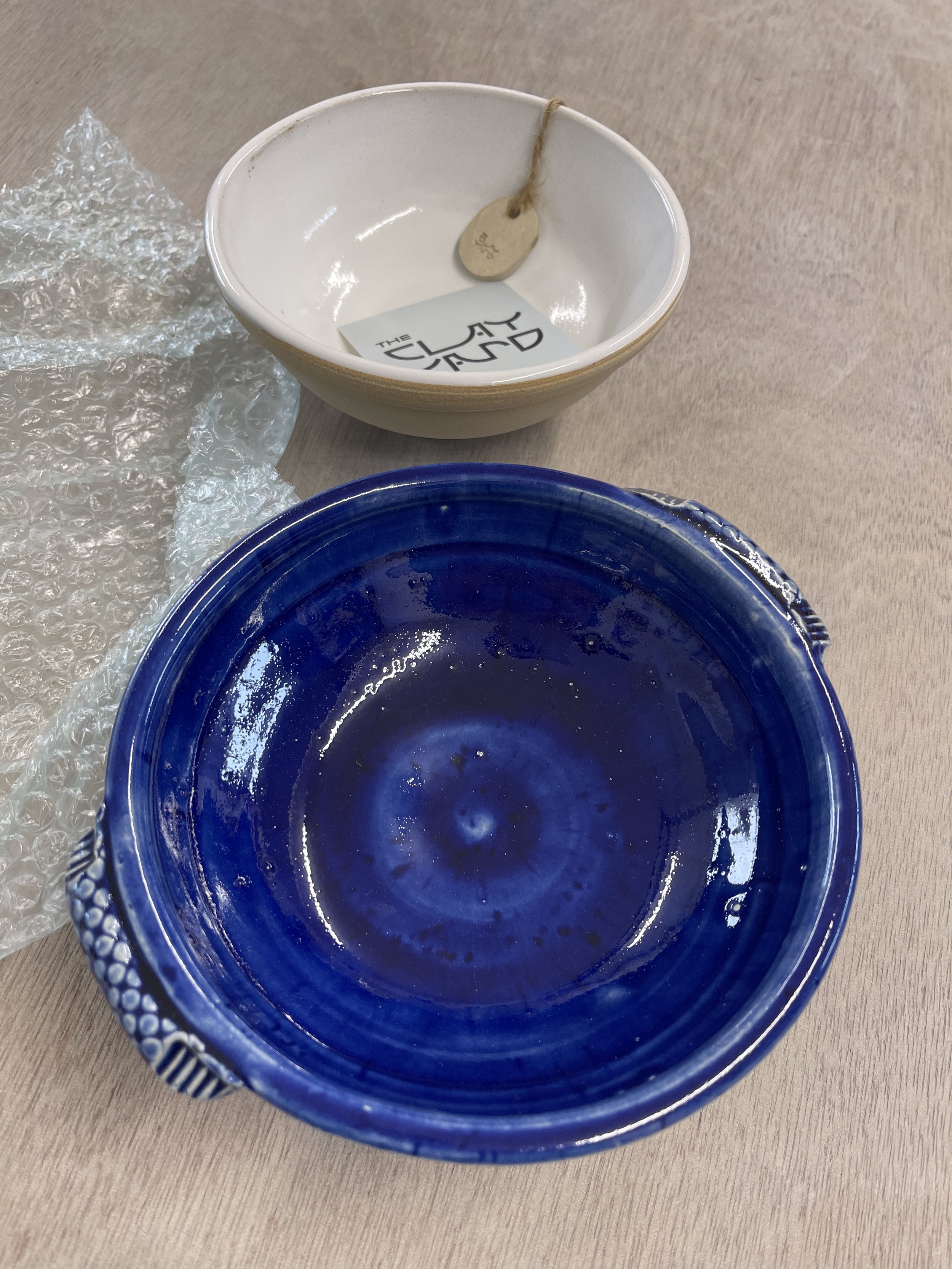
Cobalt Blue accentuates the texture.
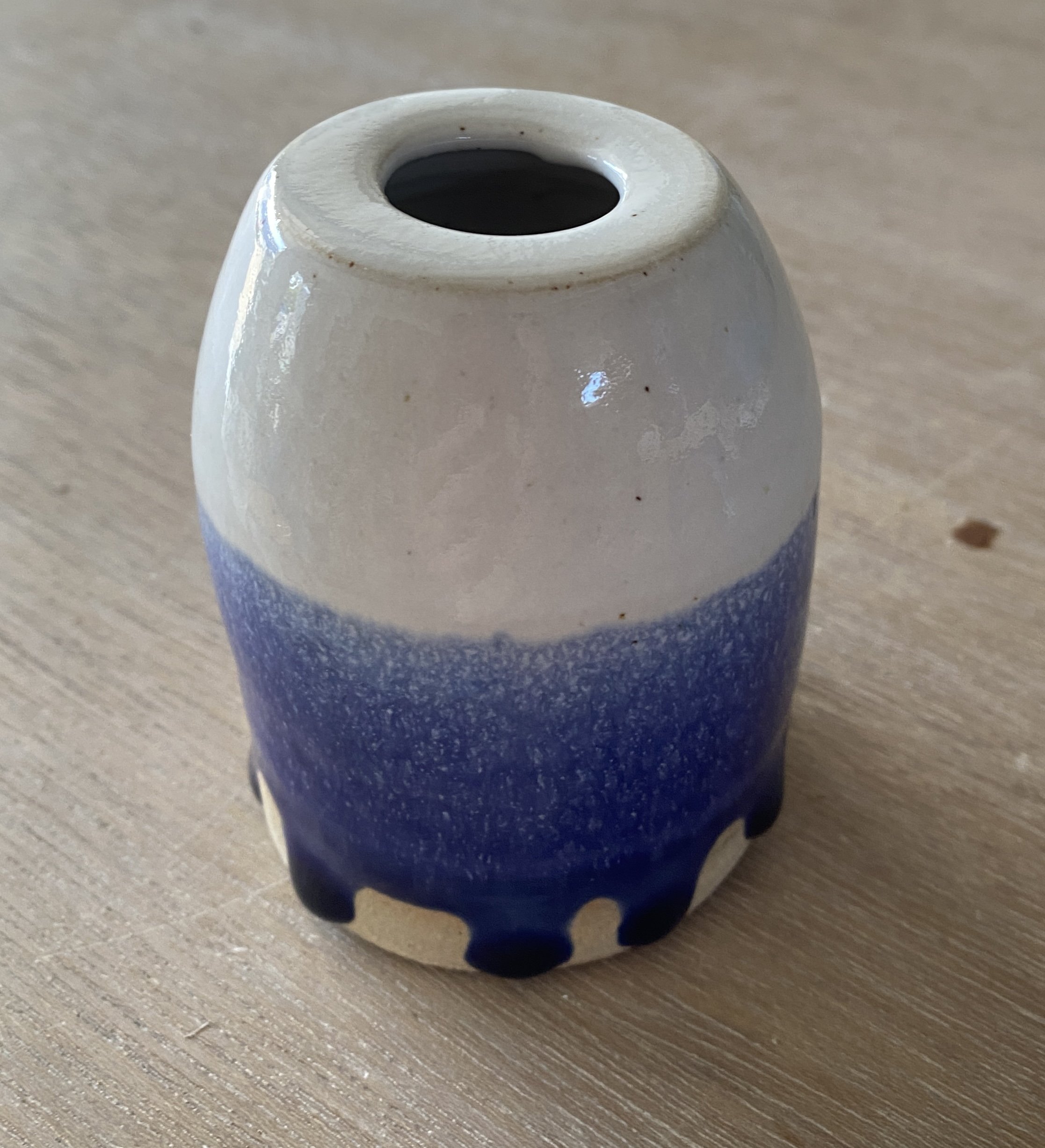
Very drippy - keep well away from the kiln shelf
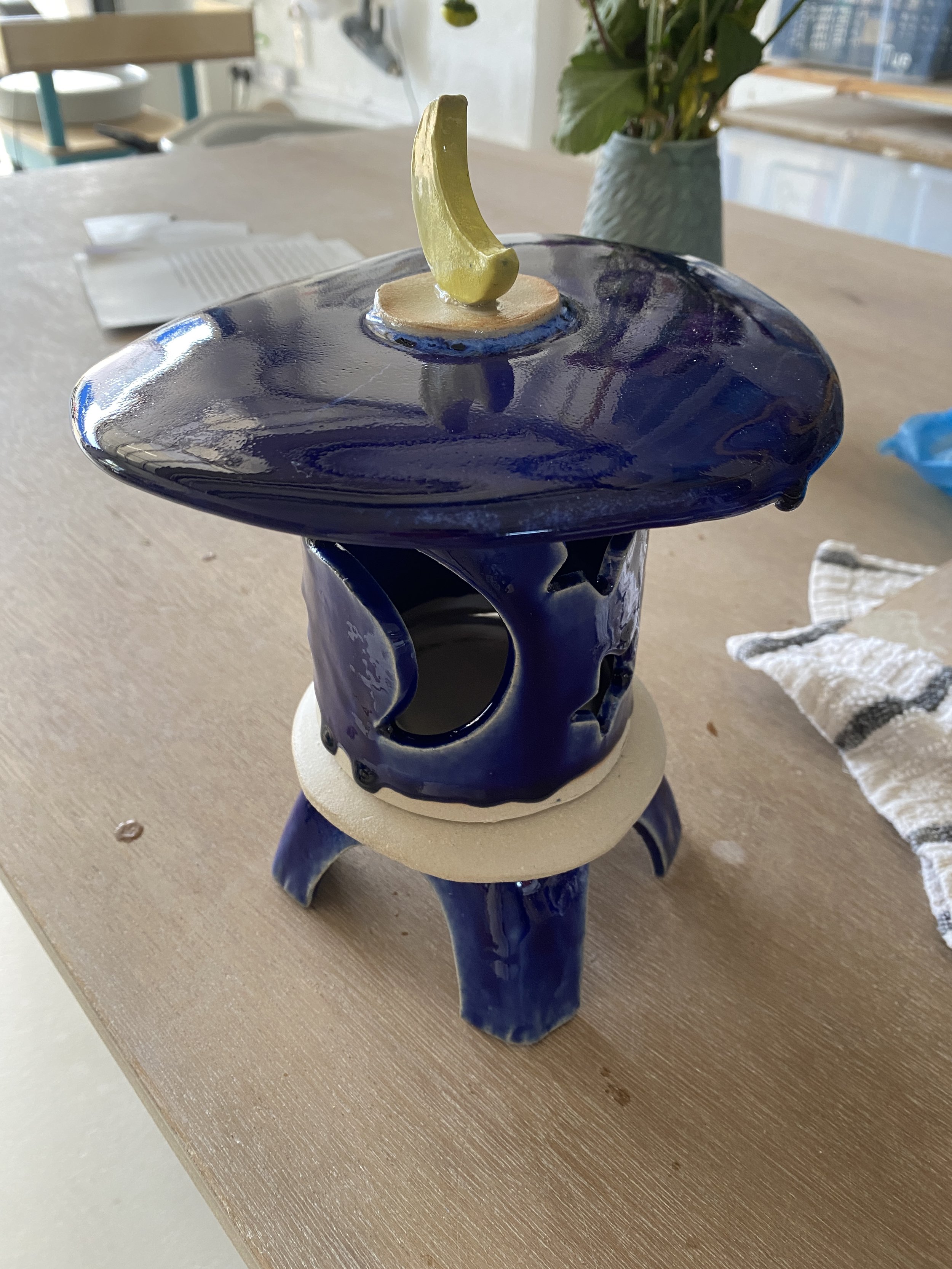
Reliably glossy
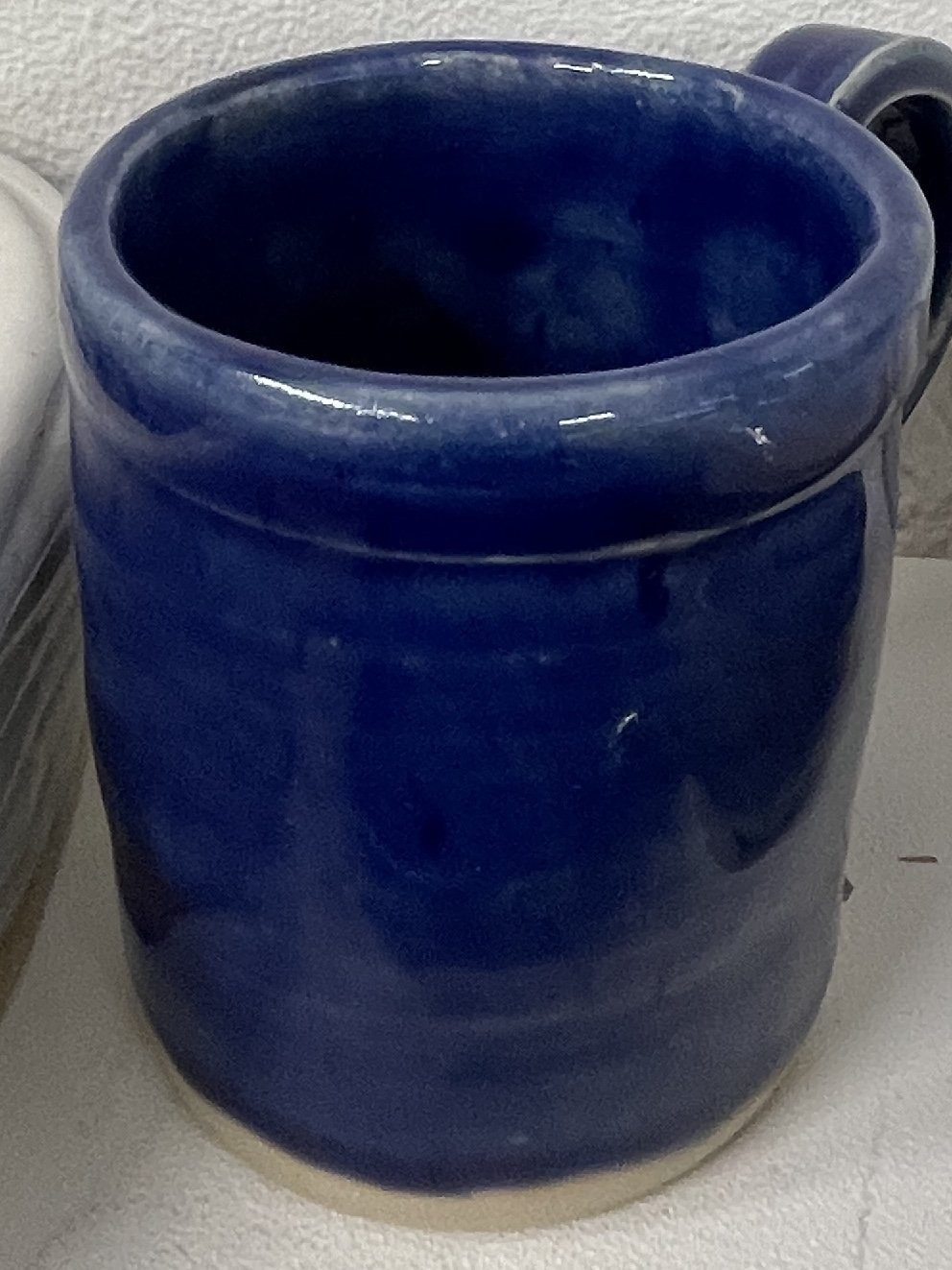
Rich and deep in colour

Jilly's Fjord Blue coiled pot in mould. Glaze has been scraped away to give an inlaid stripy effect.
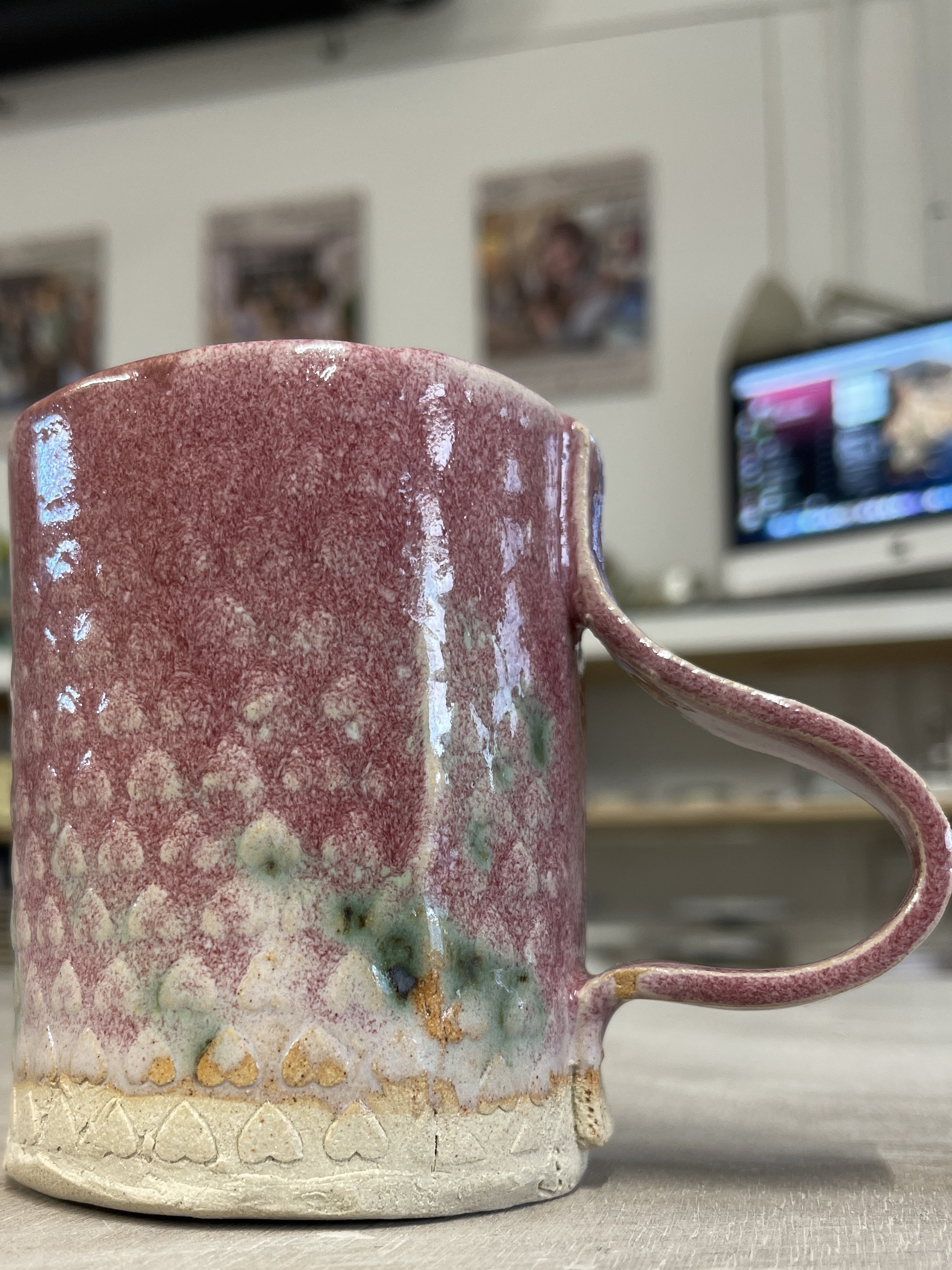
Amaryllis Pink highlights texture nicely.
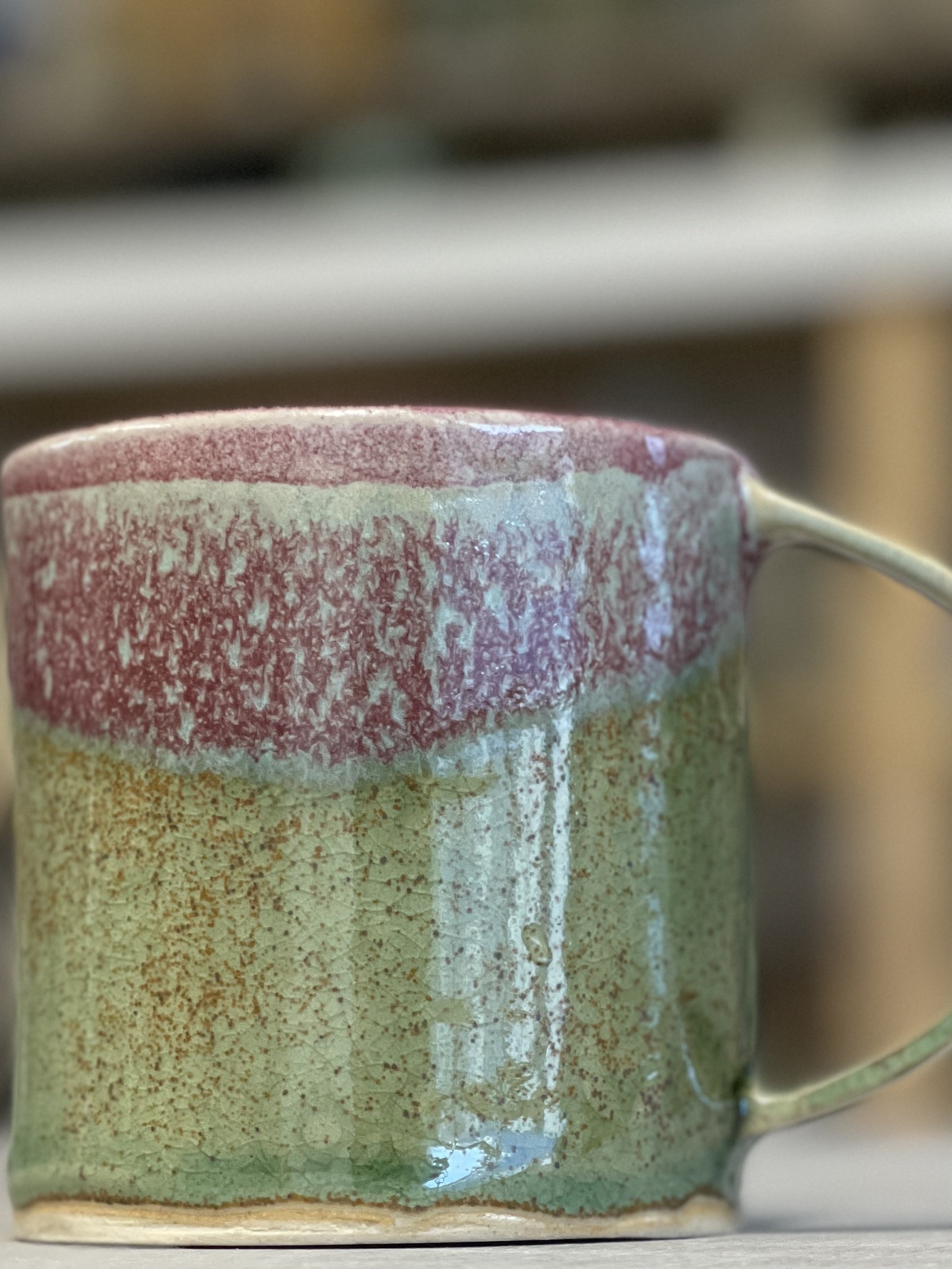
Overlaps with celadon produce this turquoise
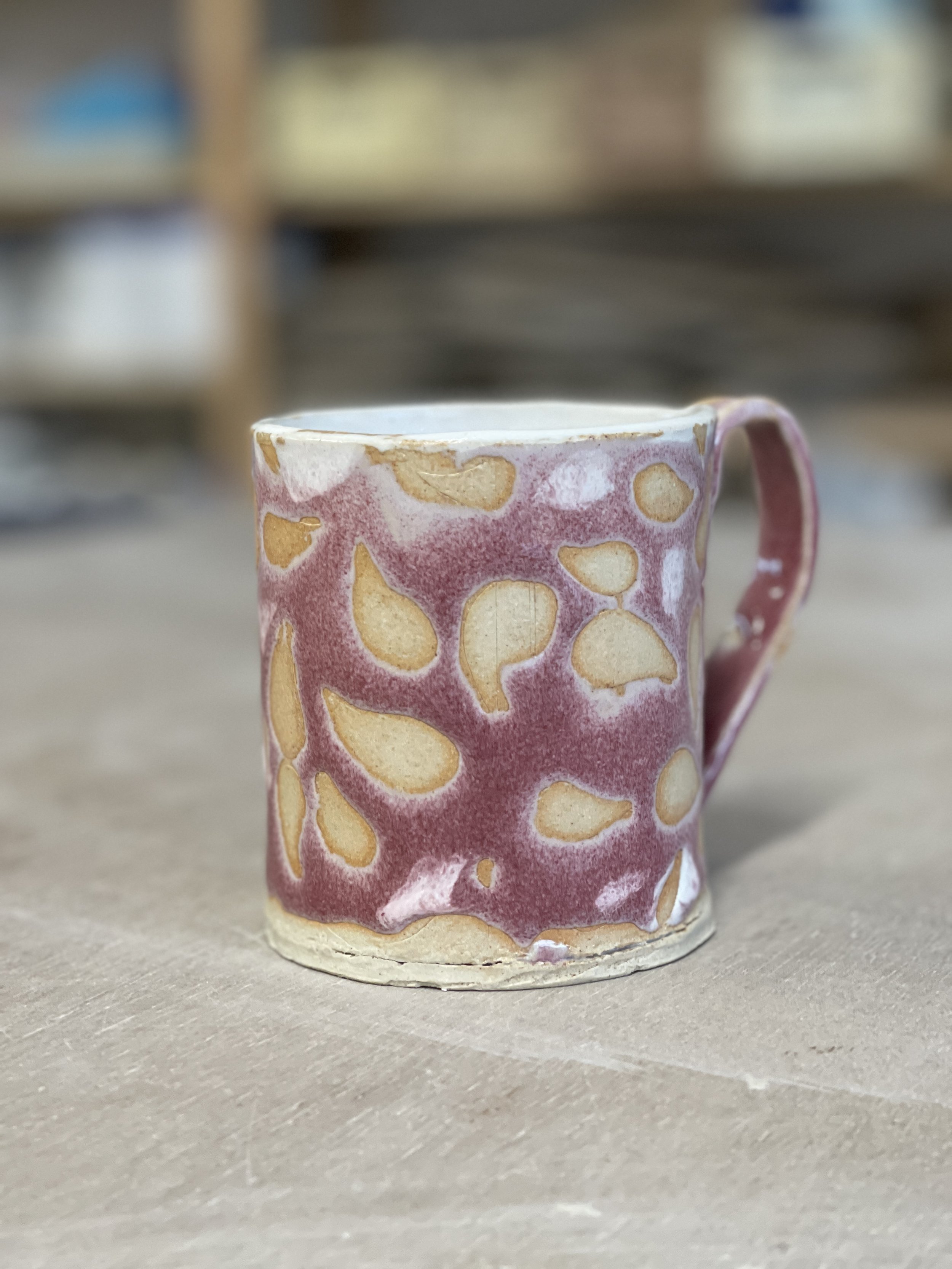
That familiar orange hue is a nice feature of this glaze.
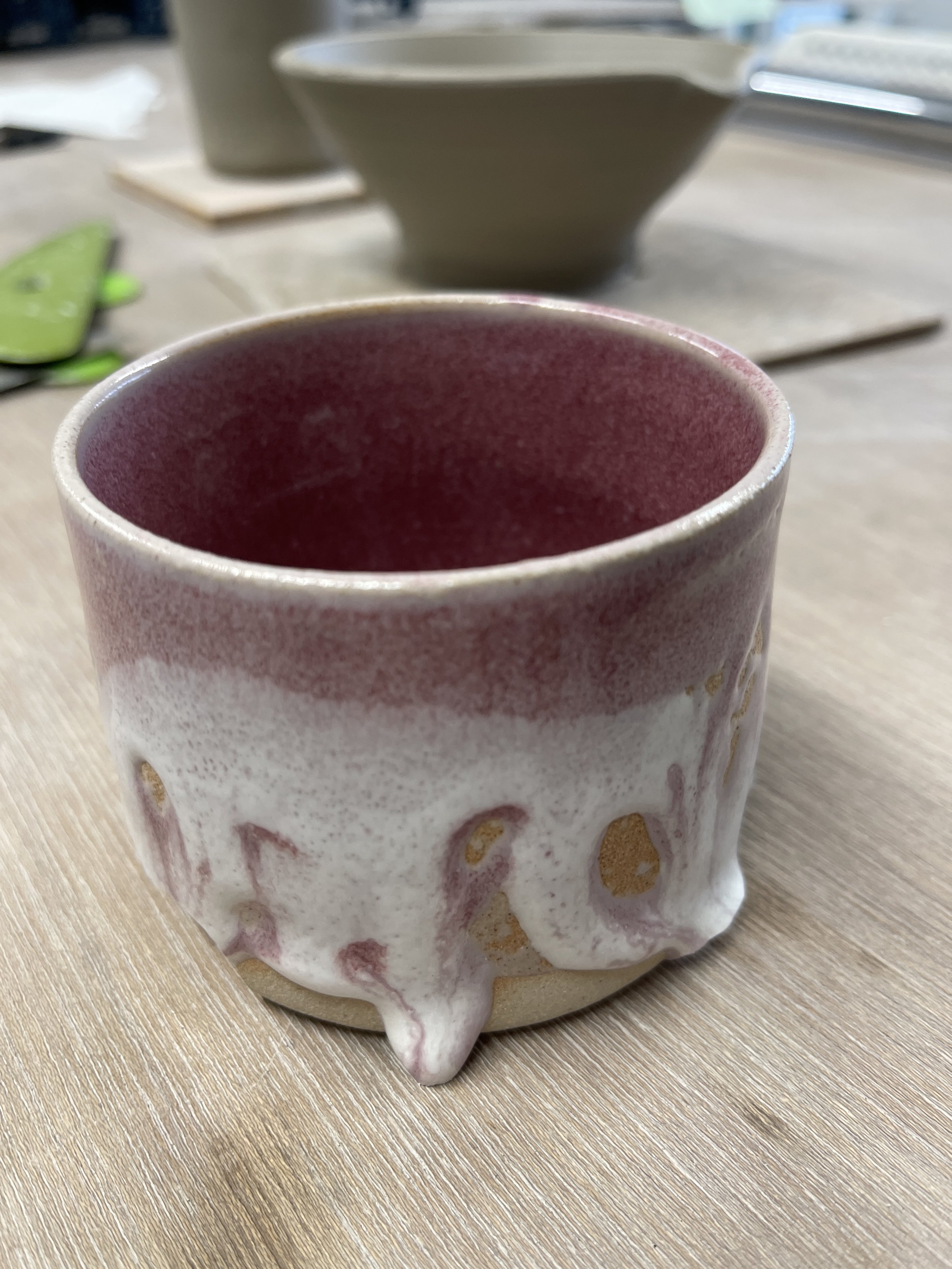
A crazy example of crawling... steer clear of white and pink. Doesn't work.
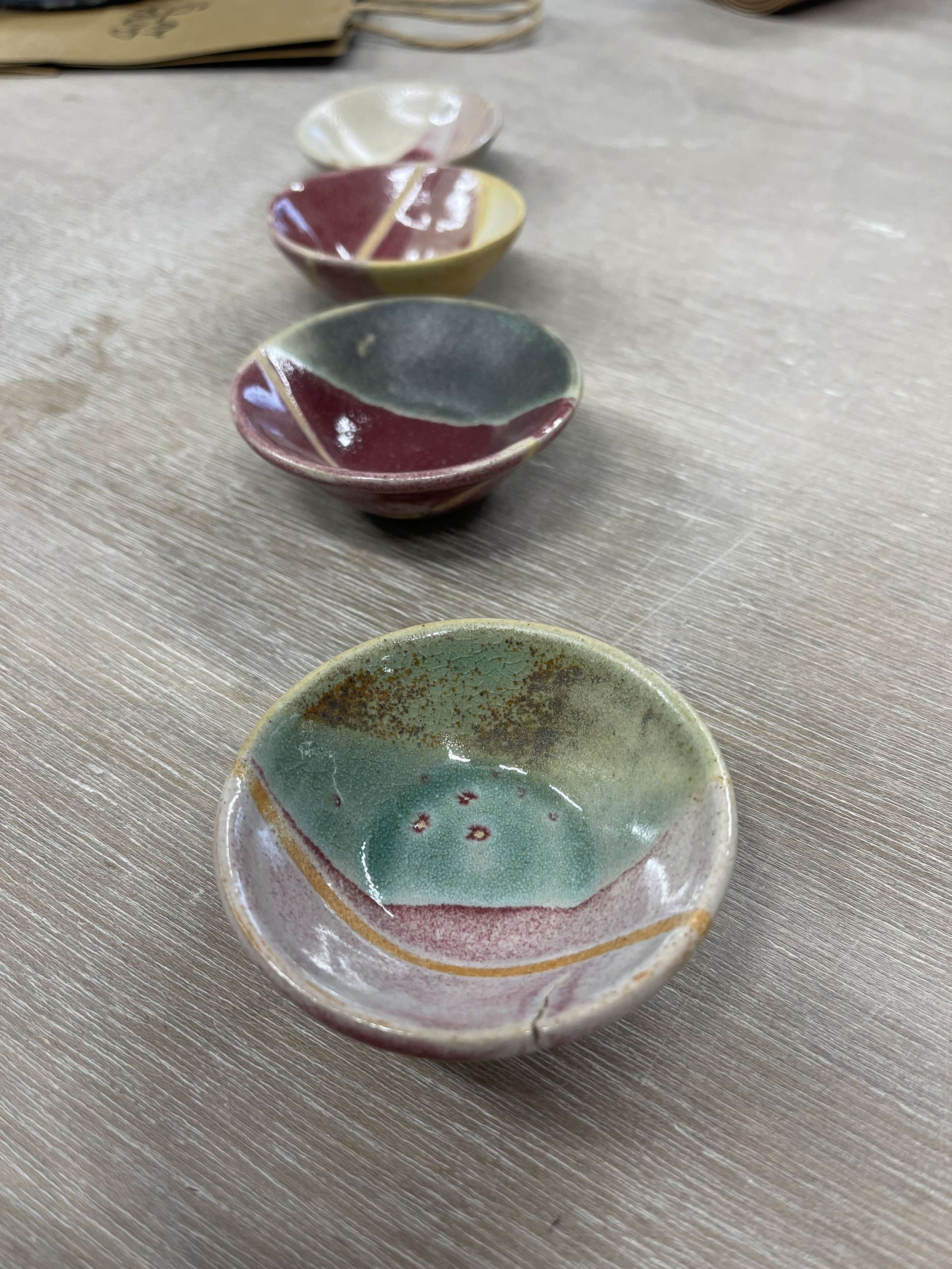
Nice glaze test dishes to highlight variations.
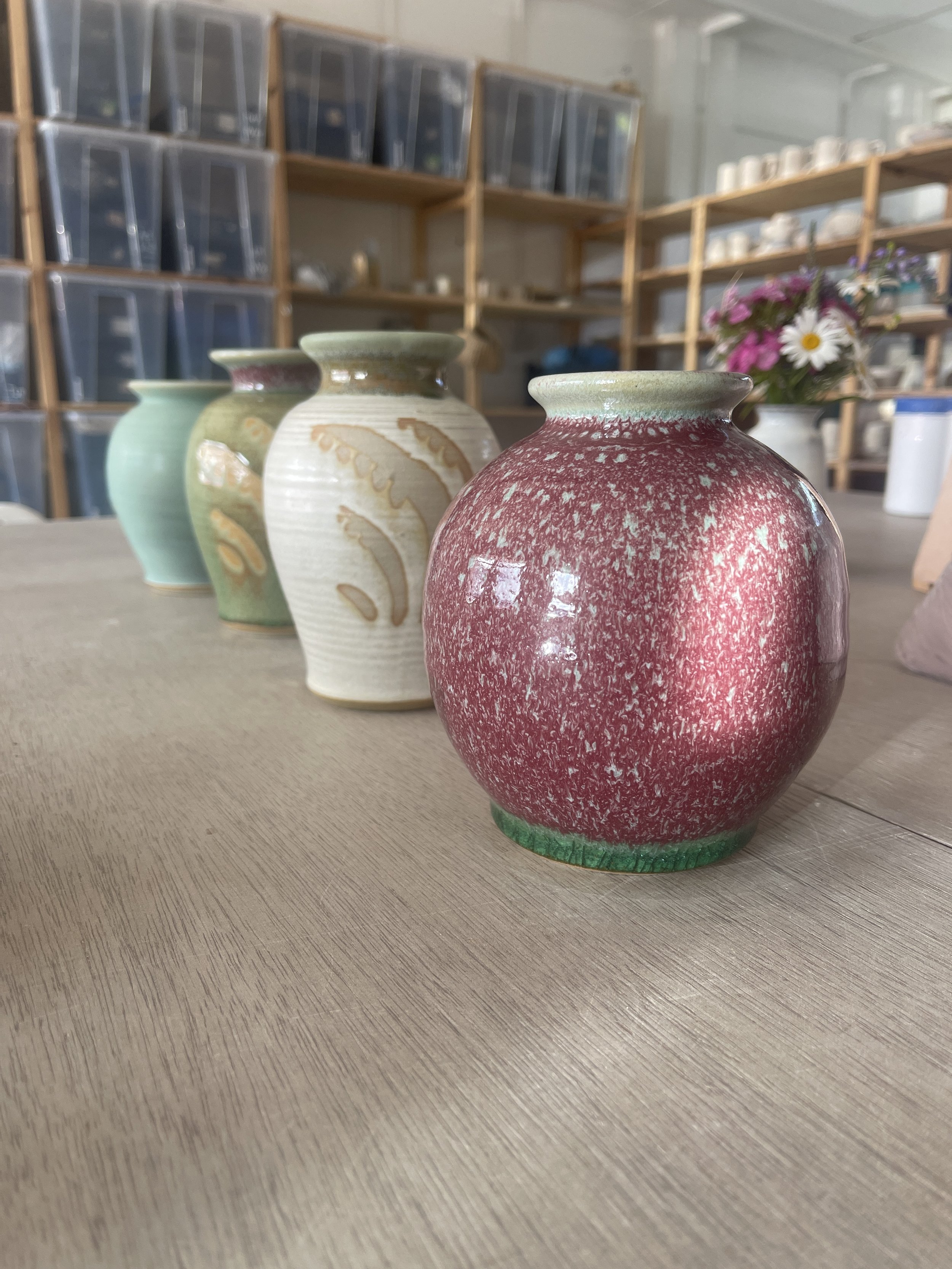
Glazed pots
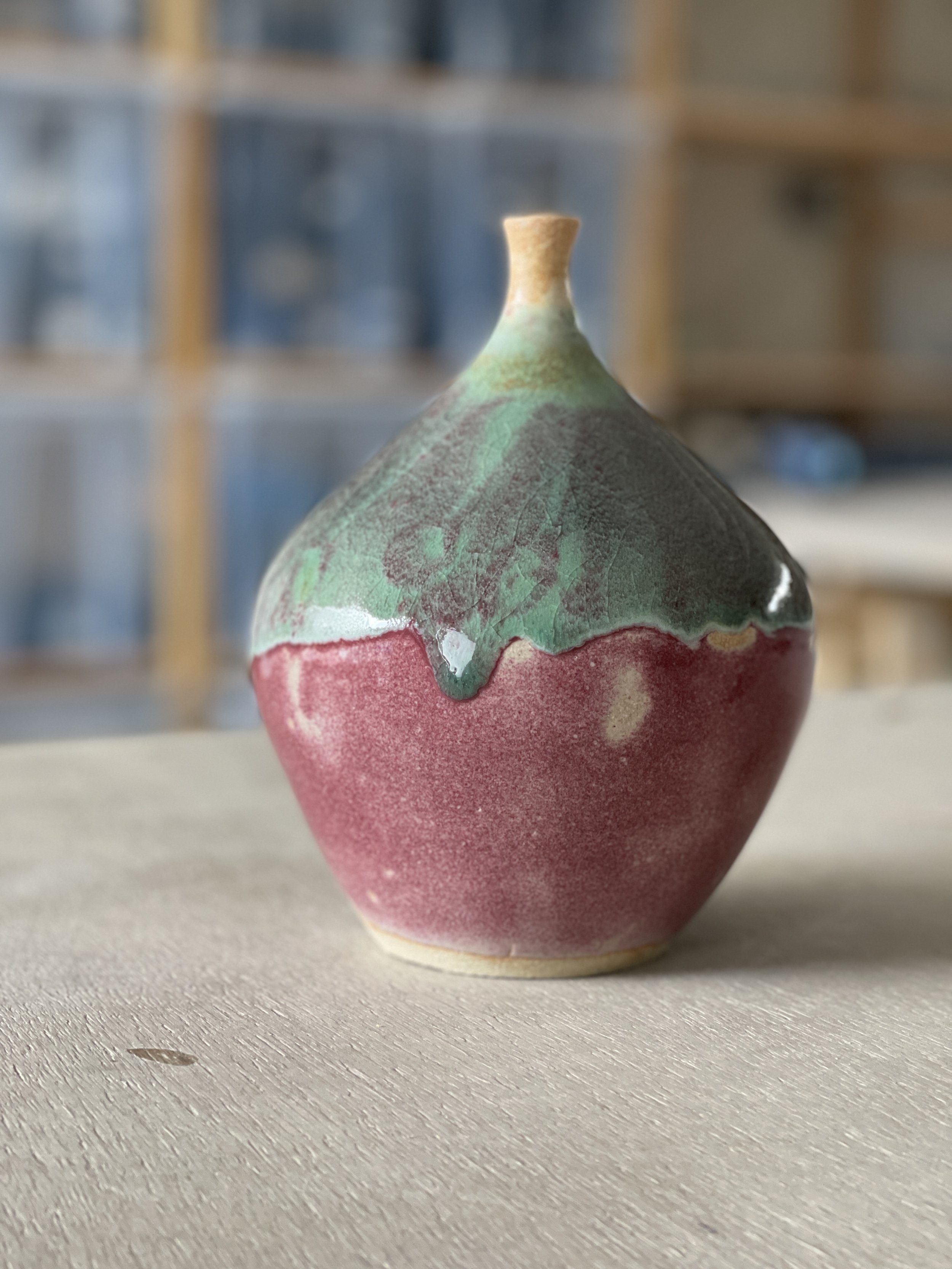
Risky gloop of celadon green.

